- International

June 22, 2023 - Missing Titanic sub crew killed after 'catastrophic implosion'
By Helen Regan , Adam Renton, Rob Picheta , Aditi Sangal , Elise Hammond , Matt Meyer , Tori B. Powell and Maureen Chowdhury , CNN
Search teams are racing to find the sub before oxygen runs out. Here's what you need to know
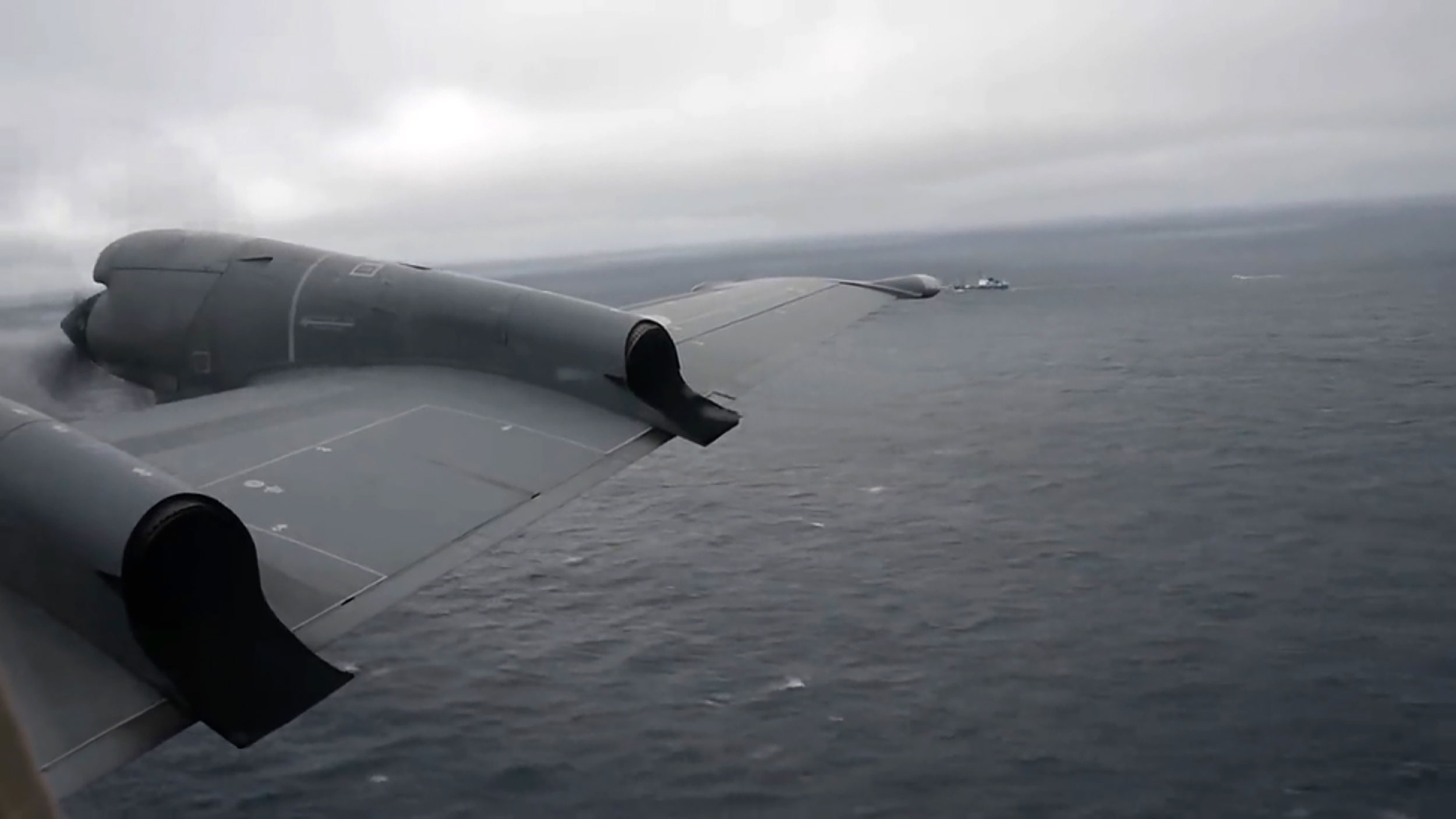
The search for the missing Titan submersible is now in a critical stage, as rescue teams race to locate the vessel before oxygen supplies run out.
The submersible begins each trip with 96 hours of life support and has been missing since Sunday, setting up Thursday morning as a key target for finding the vessel and those on board. Officials fear the craft’s oxygen supply could run out this morning.
Medical personnel and search vessels with extra capabilities headed to the scene on Thursday, with time running out.
If you're just reading in now, here's the latest news this morning:
- "New capabilities" in search: New, high-tech vessels and medical personnel are moving to the search site as rescue efforts reach a pivotal moment, a Coast Guard official has said. That includes a Magellan ROV, a uniquely equipped vessel whose use was pushed for by the Explorers Club group early on in the search.
- Search vehicle reaches sea floor: A remotely operated vehicle “has reached the sea floor” and has begun searching for the missing Titanic submersible early Thursday morning, according to the US Coast Guard. It added that “The French vessel L'Atalante is preparing their ROV to enter the water.”
- Concern over low-tech features: A former OceanGate subcontractor who worked on the development of the Titan submersible said while the game controller to operate the vessel may seem low-tech, it was actually by design. OceanGate tried to use as many “off-the-shelf" items as possible to cut down on research and development as well as costs, Doug Virnig told CNN Wednesday.
- How the sub went missing: The vessel, operated by OceanGate Expeditions, began its two-hour descent to the wreck of the Titanic on Sunday morning. (See how deep the wreckage is here. ) It lost contact with the Polar Prince, the support ship that transported the craft to the location in the North Atlantic, 1 hour and 45 minutes into its descent, officials said. Search operations began later that day. It’s still not clear what happened to the submersible, why it lost contact, and how close it was to the Titanic when it went missing.
- What we know about the noises : Banging noises were identified by Canadian aircraft on Tuesday and Wednesday morning. Remotely operated vehicle (ROV) equipment was relocated to where the noises were detected, according to Capt. Jamie Frederick, the response coordinator for the First Coast Guard District. But searches in the area "yielded negative results," he said. Data from the plane that identified the noises was sent to the US Navy, but has so far been inconclusive, Frederick said, adding that the Coast Guard does not know what the sounds were.
- What it could be like onboard: Officials believe the five people on board have "limited rations" of food and water. Ret. Navy Capt. David Marquet, a former submarine captain, told CNN the near-freezing water at that depth is probably making the situation very uncomfortable. "There's frost on the inside of the parts of the submarine. They're all huddled together trying to conserve their body heat. They're running low on oxygen and they're exhaling carbon dioxide," he said.
British submariner and equipment are assisting search efforts for missing sub
From CNN's Sharon Braithwaite and Luke McGee in London
A British navy submariner and equipment from a UK firm will help the search for the missing Titan submersible , a Downing Street spokesperson said Thursday.
"At the request of US Coastguard, the UK has embedded a Royal Navy submariner to assist the search and rescue effort for the missing submarine," the spokesperson said, according to UK's PA Media on Thursday.
Lt. Commander Richard Kantharia "has significant knowledge of submarine warfare and dived operations and so he will obviously be bringing that experience to the search and rescue team," the spokesperson added. The officer was on exchange with the US Navy and has been seconded to the search and rescue team, according to PA.
A British C-17 aircraft will transport “specialist commercial equipment” provided by deep sea-mapping company Magellan to St. John’s to assist with the search-and-rescue effort, PA also reported.
A spokesperson for Britain’s Royal Air Force told CNN on Thursday: “Following a request overnight from the lead organisation, RAF air transport assets are assisting with the movement of additional commercial equipment. ”
Along with the C-17, an A400 aircraft is transporting specialist loaders and crew, the air force said. Both aircraft departed RAF Lossiemouth in Scotland for Canada earlier on Thursday.
The missing submarine is carrying five people — a British adventurer, a French diver, a Pakistani father and son and the founder of OceanGate Expeditions, the company that operated the tour to the Titanic wreckage.
A massive search operation is underway in an area twice the size of Connecticut for the submersible that went missing Sunday —as officials fear the craft’s oxygen supply could run out this morning.
From Catherine Nicholls in London
Passengers on the missing sub would know to "take it easy" to save oxygen, friend of two onboard says
A friend of two passengers on board the missing submersible has said he still has hope the vessel will be found.
“I know that the adventurers on board are experienced, very experienced,” said Per Wimmer, an adventurer who was previously signed up for two canceled trips on the Titan.
Wimmer is an acquaintance of Hamish Harding and Stockton Rush, two of the five people on the missing vessel. He said Harding, a British businessman and trained jet pilot, and Rush, the CEO and founder of the company leading the voyage, are both very experienced adventurers who would know to conserve oxygen.
Wimmer said that the presence of OceanGate CEO Stockton Rush on board the vessel is helpful, as he knows “the ins and outs of how this submersible works.”
Officials fear the sub's oxygen supply would run out on Thursday, meaning the search is in a critical phase.
Medical personnel to join Titan search on Thursday, official says
From CNN's Kristina Sgueglia
New, high-tech vessels and medical personnel are moving to the search site as rescue efforts reach a pivotal moment, a Coast Guard official has said.
Rear Adm. John Mauger told NBC on Thursday that the search and rescue mission will continue with "new capability" arriving.
That includes a Magellan ROV, a uniquely equipped vessel whose use was pushed for by the Explorers Club group early on in the search. It has been questioned whether the Magellan should have been sent to the site much earlier in the search operation.
Mauger said they have been “overwhelmed by all the support that’s been provided by the international community” adding “we made some decisions to prioritize based on gear that was closest to the site and could get there.”
Mauger also said that medical personnel who have “deep sea medical expertise” are moving to the site, and a hyperbaric chamber is also en route.
“We continue to find in particularly complex cases that people's will to live really needs to be accounted for as well, and so we're continuing to search and proceed with rescue efforts by bringing this new capability online this morning,” he told NBC.
Search vehicle reaches sea floor as teams race to find sub
From CNN's Gloria Pazmino
A remote operated vehicle “has reached the sea floor” and has begun searching for the missing Titanic submersible early Thursday morning, according to the US Coast Guard.
“The Canadian vessel Horizon Arctic has deployed an ROV that has reached the sea floor and began its search for the missing sub,” the US Coast Guard tweeted .
It added that “The French vessel L'Atalante is preparing their ROV to enter the water.”
Titan submersible "is designed to come back up" after 24 hours, investor says
From CNN's Emma Tucker

The Titan submersible that went missing en route to the Titanic wreck was designed to return to the surface after 24 hours, according to Aaron Newman, an investor in OceanGate who visited the site on the vessel in 2021.
Titan is held underwater by ballast — heavy weights that helps with a vessel’s stability — built to be automatically released after 24 hours to send the sub to the surface, Newman said.
Crew members are told they can release the ballast by rocking the ship or use a pneumatic pump to knock the weights free, Newman said. If all else fails, he said, the lines securing the ballast are designed to fall apart after 24 hours to automatically send it back to the ocean’s surface.
Titan’s thrusters are powered by an external electrical system, while an internal system powers communications and a heater, Newman said.
Separately, Discovery Channel host Josh Gates , who went on a test dive on the Titan in 2021, said he learned that year that there were four ways for the vessel to shed weight and bring it back up to the surface in the case of an emergency.
There is a computer-controlled weight release, a manual-valve system that injects air into exterior ballast containers, a hydraulic system to drop weights and an ability to detach from the sled attached to the submersible and help move the vessel back to the surface.
Read more here .
"We need a miracle," Titanic exploration expert says
From CNN's Rob Picheta

Teams searching for the missing submersible “need a miracle” to find it before oxygen supplies run out, a leading deep-sea explorer told CNN.
“The good news there is that miracles can happen,” added David Gallo, the senior adviser for Strategic Initiatives at RMS Titanic Inc.
“We have to not think about the clock all the time, and just go as fast as possible,” Gallo told CNN’s “This Morning.” “It’s tough because the oceans are pitch black — you can only use sound to image effectively, and you’ve got to be pretty much on top of the object to actually see it,” he said.
Gallo is a colleague of French diver Paul-Henri Nargeolet, one of the passengers on the sub. He said that Nargeolet, an experienced explorer, would ensure that the banging noises picked up by search teams “cannot be interpreted as anything but human,” if indeed the noises did come from inside the vessel.
Thursday morning was identified as a critical period for the search operation, with oxygen supplies on board the sub understood to be rapidly dwindling.
Future research at the Titanic wreck is unlikely after the Titan went missing, expert says
The chances of future research being carried out at the Titanic wreck have diminished after the Titan sub went missing on its journey to the site, an expert has said.
David Scott-Beddard, the CEO of Titanic exhibition company White Star Memories Ltd, told CNN that the tragedy has “without a doubt” impacted opportunities to visit and study the wreckage.
“The chances of any future research being carried out on the wreck of Titanic is extremely slim. Probably not in my lifetime,” Scott-Beddard told CNN’s “Early Start.”
“I imagine there will be an inquiry no doubt after this disaster, and much more stringent rules and regulations will be put in place,” he said.
Concerns have been raised about the low-tech and controversial features of the OceanGate vessel . A former OceanGate subcontractor who worked on the development of the submersible Titan has said some of the construction materials and design choices were considered "controversial" at the time it was being made in 2018.
Enduring appeal: Several research trips were made to the Titanic site after it was discovered in 1985, and many of its artifacts have been controversially recovered and displayed around the world since. But commercial trips like those offered by OceanGate are a far more recent phenomenon.
“Titanic is one of those unreachable, unattainable things for most of us, unless you’ve been working in research and have been lucky enough to dive to the wreck in the past,” Scott-Beddard said, explaining the enduring appeal of the ship. “She sits majestically on the sea bed; (it’s) incredibly rare for a ship that sunk to be sitting upright.”
The ocean's depths are so elusive that only 20% of the seafloor has been mapped
From CNN's Jackie Wattles, Ashley Strickland and Katie Hunt

The submersible vehicle currently lost at sea is part of a relatively new effort enabling tourists and other paying customers to explore the depths of the ocean, the vast majority of which has never been seen by human eyes.
Though people have been exploring the ocean’s surface for tens of thousands of years, only about 20% of the seafloor has been mapped, according to 2022 figures from the National Oceanic and Atmospheric Administration.
Researchers often say that traveling to space is easier than plunging to the bottom of the ocean. While 12 astronauts have spent a collective total of 300 hours on the lunar surface, only three people have spent around three hours exploring Challenger Deep, the deepest known point of Earth’s seabed, according to the Woods Hole Oceanographic Institution .
There’s a reason deep-sea exploration by humans has been so limited: Traveling to the ocean’s depths means entering a realm with enormous levels of pressure the farther you descend — a high-risk endeavor. The environment is dark with almost no visibility. The cold temperatures are extreme.
Many of the factors that could make the vessel so difficult to locate and recover are also the reasons a comprehensive exploration of the ocean floor remains elusive.
“Aquatic search is pretty tricky, as the ocean floor is a lot more rugged than on land,” said Dr. Jamie Pringle, a reader in forensic geoscience at England’s Keele University, in a statement.
Read the full story here .
Please enable JavaScript for a better experience.
Titanic tourist submersible carrying 5 disappears on trip to see wreck in North Atlantic

- Show more sharing options
- Copy Link URL Copied!
An intensifying search-and-rescue mission was underway Monday after a submersible watercraft used for tourist expeditions to view the wreck of the Titanic went missing Sunday with five people aboard in the North Atlantic, according to the U.S. Coast Guard.
The Coast Guard said on Twitter that it was searching for a 21-foot submersible from the Canadian research vessel Polar Prince that lost contact about 900 miles east of Cape Cod, Mass. The vessel “submerged Sunday morning, and the crew of the Polar Prince lost contact with them approximately 1 hour and 45 minutes into the vessel’s dive,” the Coast Guard wrote on Twitter.
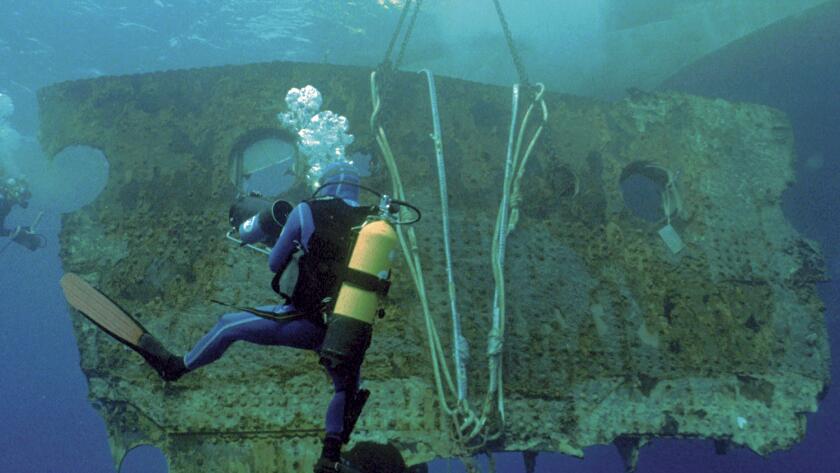
A search-and-rescue mission is underway after a submersible used for tourist expeditions to view the Titanic wreck went missing in the North Atlantic.
One pilot or sub-commander operator and four mission specialists were on board, Coast Guard Rear Adm. John W. Mauger said in a Monday afternoon news conference. He declined to identify those on the missing vessel by name.
A C-130 aircraft is being used to conduct an aerial search both visually and with radar, according to Mauger. The Coast Guard has also coordinated with the Canadian coast guard and armed forces to deploy more assets. The Canadian coast guard also has committed a C-130 aircraft, as well as a submarine and sonar buoys to aid in the search.
Travel & Experiences
Why are we still so fascinated with the Titanic?
It could be the blockbuster film, the human angle or technology’s limits. Nowhere does it resonate more than in Halifax, Canada, where some of the victims are buried.
July 30, 2012
The missing vessel was designed with a 96-hour sustainment capability if there’s any emergency onboard. Mauger said officials “anticipate that there is somewhere between the 70 to full 96 hours.”
“We’re using that time, making the best use of every moment of that time to locate the vessel,” he said.
The location being searched is a “remote area” about 13,000 feet deep, making it a challenging search-and-rescue effort, he said.
The U.S. Coast Guard will continue to fly the aircraft and move additional vessels into the area over the next couple of days to help with the search.
The Guardian reported that the sub is operated by OceanGate Expeditions, a company that offers visits to the Titanic wreck .
OceanGate confirmed its vessel was missing and posted a statement on Twitter on Monday afternoon. “We are exploring and mobilizing all options to bring the crew back safely,” the company said. “Our entire focus is on the crew members in the submersible and their families.”
pic.twitter.com/JmH8e47zuI — OceanGate Expeditions (@OceanGateExped) June 19, 2023
The Joint Rescue Coordination Center in Halifax, Canada, received a call at 9:13 p.m. Sunday from the maritime rescue coordination center in Boston requesting “assistance for the search of the overdue research sub,” said Lt. Cmdr. Len Hickey. The sub had lost contact with its surface vessel, Hickey said.

World & Nation
Millvina Dean dies at 97; last Titanic survivor
She was about 2 months old when she sailed on the ocean liner in 1912. She, her mother and brother were saved. Her father was among those who went down with the ship.
Sept. 16, 2014
The center provided a fixed-wing aircraft and a Canadian coast guard vessel to aid in the search.
Hickey was unable to provide more information and referred additional questions to the Coast Guard‘s Boston base, which is leading the effort.
David Concannon, an advisor to the company, said OceanGate lost contact with the sub Sunday morning. In an email to the Associated Press on Monday afternoon, he said it had a 96-hour oxygen supply. Concannon was supposed to be on the dive but had other commitments. He said officials are working to get a remotely operated vehicle that can reach a depth of about 20,000 feet to the site as soon as possible.
The Titanic , which sank in 1912, is about 13,000 feet below the surface at the bottom of the Atlantic Ocean nearly 400 nautical miles off the Newfoundland coast.
According to OceanGate’s website , which worked intermittently Monday, a deep-sea voyage to view the Titanic wreck was underway.
Representatives for the Coast Guard did not immediately return repeated requests for comment, nor did OceanGate Expeditions representatives.

Titanic: For many victims, their final resting place is in Halifax, Canada
Some disaster victims’ bodies pulled from the sea came to rest in Halifax, which honors the dead.
March 27, 2013
According to its website, OceanGate is a privately owned company in Everett, Wash., established in 2009, that operates a trio of five‑person submersibles for “site survey, scientific research, film production and exploration travel.” Its vessels can reach about 13,123 feet deep, the company said.
The company offers an eight-day, seven-night voyage to the Titanic wreck, according to its website. The trip runs about $250,000, according to the site.
“Become one of the few to see the Titanic with your own eyes,” the company says on its Titanic expeditions page.
The trip sets off from and returns to the city of St. John’s in Newfoundland, and takes “intrepid travelers” aboard a submersible called the Titan to explore the site of the Titanic wreck. Dive expeditions can begin as early as Day 3, according to the website. The Titan carries up to five people, the website said.
The website states no previous dive experience is necessary but details some physical requirements for passengers, including being able to board small boats in rough seas and sit for long periods of time. Explorers must also be at least 18, the website said.
Crew Tells of Historic Mission : Ship That Found Wreck of Titanic Returns Home
Not surprisingly, they called it Operation Titanic.
Sept. 10, 1985
Those embarking on the expedition receive a vessel orientation and safety briefing after boarding, the company said on its website.
Hamish Harding, the chairman of Action Aviation, a Dubai-based company dealing in aviation sales and acquisitions, is among those on the expedition, according to Harding’s social media posts and confirmed by Action Aviation.
The expedition left from St. Johns on Friday, Harding wrote on his Facebook page . A “weather window” had opened up, allowing for a dive to the wreck Sunday. It was likely to be the only “manned mission” this year because of the harsh winter, Harding wrote.
Action Aviation also posted on Twitter about the voyage .
“4am start this morning on the RMS Titanic Expedition Mission 5 with @oceangateexped,” Action Aviation wrote on Twitter on June 18. “The sub had a successful launch and Hamish is currently diving. Stay tuned for further updates!”
Harding wrote on Instagram that the team on the sub has “legendary explorers,” including Paul-Henry Nargeolet, a veteran and accomplished diver with more than 30 trips to the wreck site .
The Titanic was a British luxury liner that made its maiden voyage from Southampton, England, on April 10, 1912, bound for New York with 2,227 passengers and crew aboard. But the vessel, then the largest in the world, rammed an iceberg and sank in the early morning hours of April 15, killing more than 1,500 people .
In September 1985, an American and French team of researchers found the liner thousands of feet down.
The Associated Press contributed to this report.
More to Read

New deep-water channel allows first ship to pass Key Bridge wreckage in Baltimore
April 25, 2024
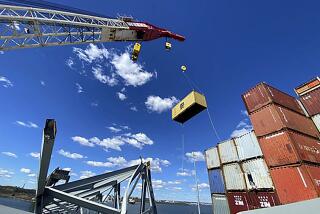
Salvage crews have begun removing containers from the ship that collapsed Baltimore’s Key bridge
April 8, 2024

Efforts underway to remove Baltimore bridge ruins; search suspended for 4 workers presumed dead
March 28, 2024
Start your day right
Sign up for Essential California for news, features and recommendations from the L.A. Times and beyond in your inbox six days a week.
You may occasionally receive promotional content from the Los Angeles Times.

Alexandra E. Petri is a former Los Angeles Times staff writer who covered trends and breaking news. She previously covered live news at the New York Times. A two-time reporting fellow with the International Women’s Media Foundation, she graduated from Penn State with a degree in journalism and international studies.

Summer Lin is a reporter on the Fast Break Desk, the Los Angeles Times’ breaking news team. Before coming to The Times, she covered breaking news for the Mercury News and national politics and California courts for McClatchy’s publications, including the Sacramento Bee. An East Coast native, Lin moved to California after graduating from Boston College and Columbia University’s Graduate School of Journalism. In her free time, she enjoys hikes, skiing and a good Brooklyn bagel.
More From the Los Angeles Times

Solomon Islands lawmakers elect Foreign Minister Jeremiah Manele as new prime minister

Mace, green lasers, screeching soundtracks: Inside the UCLA encampment on a night of violence
May 1, 2024

Science & Medicine
WHO overturns dogma on airborne disease spread. The CDC might not act on it

Entertainment & Arts
Prince William shares positive health update about Kate Middleton amid cancer battle
What we know about the submersible missing near the Titanic wreck
A submersible vessel carrying five people in the North Atlantic went missing Sunday, triggering a search-and-rescue effort. The Titan underwater vehicle owned by OceanGate Expeditions was exploring the wreckage of the Titanic when it lost contact with a research vessel on the surface. The missing people probably have enough oxygen to survive for three to four days , Rear Adm. John Mauger, who is leading the Coast Guard’s search operation, told reporters.
But the remote location and depth of the Titanic site, combined with debris in the area, could hamper rescue efforts . Andrew Norris, a retired Coast Guard captain, said he does not believe that a rescue vessel could reach that depth.
Missing Titanic submersible
The latest: After an extensive search, the Coast Guard found debris fields that have been indentified as the Titan submersible. OceanGate, the tour company, has said all 5 passengers are believed dead.
The Titan: The voyage to see the Titanic wreckage is eight days long, costs $250,000 and is open to passengers age 17 and older. The Titan is 22 feet long, weighs 23,000 pounds and “has about as much room as a minivan,” according to CBS correspondent David Pogue. Here’s what we know about the missing submersible .
The search: The daunting mission covers the ocean’s surface and the vast depths beneath. The search poses unique challenges that are further complicated by the depths involved. This map shows the scale of the search near the Titanic wreckage .
The passengers: Hamish Harding , an aviation businessman, aircraft pilot and seasoned adventurer, posted on Instagram that he was joining the expedition and said retired French navy commander Paul-Henri Nargeolet was also onboard. British Pakistani businessman Shahzada Dawood, 48, and his son, Suleman, 19, were also on the expedition, their family confirmed. The CEO of OceanGate , the submersible expedition company, was also on the vessel. Here’s what we know about the five missing passengers.

Missing Titanic submersible live updates: Texts show OceanGate CEO dismissed concerns
Five people, including the company CEO, were aboard the sub when it imploded.
All passengers are believed to be lost after a desperate dayslong search for a submersible carrying five people that vanished while on a tour of the Titanic wreckage off the coast of Newfoundland, Canada.
The 21-foot deep-sea vessel, operated by OceanGate Expeditions , lost contact about an hour and 45 minutes after submerging on Sunday morning with a 96-hour oxygen supply. That amount of breathable air was forecast to run out on Thursday morning, according to the United States Coast Guard, which was coordinating the multinational search and rescue efforts.
Latest headlines:
Rcmp to investigate the deaths aboard titan sub, us taxpayer cost for search and rescue may be $1.5 million, expert says, oceangate ceo claimed sub was safer than scuba diving, texts show.
- OceanGate co-founder defends development of submersible
- Sub's carbon-fiber composite hull was the 'critical failure,' James Cameron says
- Probe seeks answers on why Titanic sub imploded
- Navy likely detected sound of the implosion on Sunday: Official
- All lives believed to be lost: OceanGate
Officials with Canada's Transportation Safety Board said at a press conference Saturday that they have begun speaking with people on board the Polar Prince, which launched the ill-fated Titan submersible.
The Polar Prince returned to its port, St. John's, Newfoundland, on Saturday morning.
"I would say that we've received full cooperation," TSB Director of Marine Investigations Clifford Harvey said. "It's been a really good interaction thus far and is really getting full cooperation with all the individuals involved."
In addition, the Royal Canadian Mounted Police (RCMP) said they are "examining the circumstances" of the deaths on board Titan, and will launch a full investigation if "the circumstances indicate criminal, federal or provincial laws may possibly have been broken."
-ABC News' Matt J. Foster
A defense budget expert estimates once the U.S. military participation concludes, the cost for the search and rescue mission of the five passengers on board the Titan submersible will cost the U.S. around $1.5 million.
Mark Cancian, a senior advisor with the Center for Strategic and International Studies, came up with the estimate based on aircraft sorties, cross referencing the U.S. Department of Defense cost numbers, Coast Guard Cutter costs and flying hour costs. He said some costs have already been set aside in various budgets, with resources simply diverted to the site.
He emphasized that these are strictly well-informed guesses.
A spokesperson for the Coast Guard's District 1 in Boston would not give an estimate of costs so far, saying, "We cannot attribute a monetary value to Search and Rescue cases, as the Coast Guard does not associate cost with saving a life."
-ABC News' Jaclyn C. Lee
US Coast Guard to lead sub investigation
The U.S. Coast Guard will be the organization leading the investigation into the OceanGate sub incident.
The NTSB announced the news on Friday via Twitter, noting it will "contribute to their efforts."
A Las Vegas father and son told ABC News OceanGate CEO Stockton Rush pressured them for months into taking two seats on the now failed mission to the Titanic, making bold claims about the vessel's safety.
Financier Jay Bloom shared text messages between himself and Rush where Rush dismissed concerns from Bloom and his son Sean about taking the trip on the Titan submersible.
"While there's obviously a risk it's way safer than flying in a helicopter or even scuba diving," Rush texted.
"He sort of had this predisposition that it was safe," Bloom told ABC News. "And anybody who disagreed with him, he felt it was just a differing opinion."
Bloom added that Rush flew out to Las Vegas in a homebuilt plane to convince him to attend the voyage aboard the submersible.
"He flew it all the way to Vegas. And I was like, 'This guy is definitely down to take risk,'" Bloom said.
-ABC News' Sam Sweeney
Top Stories
Justice stephen breyer's blunt message to supreme court conservatives: 'slow down', 14-year-old suspect dead after active shooter reported outside middle school: sources, brittney griner reflects on 'mistake' that led to detention in russia, 5th victim's body recovered in baltimore key bridge collapse, 2-year-old dies after bounce house blown away.
Highlights from Day One as the search for the missing Titanic submersible continues
Coverage on this live blog has ended. Please click here for the latest updates.
The CEO of OceanGate Expeditions, Stockton Rush, was on board and piloting the missing submersible that vanished during a mission to explore the wreckage of the Titanic , the company said Tuesday.
There is less than 40 hours of oxygen supply left on the missing vessel, named Titan, which is carrying five people, a U.S. Coast Guard official said Tuesday as the search continues.
The submersible is part of an OceanGate Expeditions tour that offers passengers a once-in-a-lifetime experience to explore the Titanic wreckage. It went missing Sunday after it lost contact with the research vessel Polar Prince.
What to know about the missing vessel, Titan
- The U.S. Coast Guard is searching for the missing research submersible, named Titan, that disappeared Sunday.
- The wreckage of the Titanic, the iconic ocean liner that sank more than a century ago, is 900 nautical miles east of Cape Cod, Massachusetts.
- The sub had up to 96 hours of oxygen supply and by 1 p.m. ET Tuesday was down to 41 hours, the U.S. Coast Guard said.
- Canadian aircraft detected “underwater noises” in the search area, the U.S. Coast Guard said early Wednesday. It said searches “yielded negative results but continue.”
- The price of a spot on the submersible was $250,000. It was on only its third trip since OceanGate Expeditions began offering trips in 2021.
British billionaire Hamish Harding, owner of Action Aviation, was also among the five people on the vessel , along with French dive expert Paul Henry Nargeolet and prominent Pakistani businessman Shahzada Dawood and his son, Suleman.
Aircraft detect 'underwater noises' in the search for missing submersible
Phil Helsel
Valeriya Antonshchuk
Canadian aircraft searching for signs of the submersible detected “underwater noises” in the search area, the U.S. Coast Guard said early Wednesday.
The underwater noises, detected by Canadian P-3 aircraft, prompted searches by remotely operated vehicles, the Coast Guard tweeted shortly before 12:30 a.m. ET.
"Those ROV searches have yielded negative results but continue," the message read. "Additionally, the data from the P-3 aircraft has been shared with our U.S. Navy experts for further analysis which will be considered in future search plans."
A representative said OceanGate was unable to provide any additional information at this time.
Coast Guard image shows search patterns for Titan
The U.S. Coast Guard released an image showing the search patterns for Titan.

It said that 10,000 square miles had been searched as of Tuesday and that the searches are ongoing.
Canadian coast guard, navy and private research and commercial vessels with remotely operated vehicles have responded or were en route to help Tuesday, officials said. The U.S. and Canada also have planes searching.
Coast Guard establishes unified command in search for Titan
The U.S. Coast Guard said Tuesday night that it and other agencies and searchers are operating under a unified command as the search for the Titan continues.
More than 10,000 square miles had been searched by Tuesday morning, the Coast Guard said, and weather and visibility have improved.
Three Canadian coast guard ships, as well as a commercial vessel and a French research vessel with remote-operated vehicles, and a Canadian navy ship with a mobile decompression chamber were on the way, the Coast Guard said.
The Bahamian research vessel Deep Energy and a U.S. Air National Guard C-130 are also searching, the Coast Guard said.
Friend of man on submersible says he and Hamish Harding's family are hopeful
Tom Costello
Titan submersible passenger Hamish Harding was excited for the voyage down to the ocean’s depths to see the wreckage of the Titanic, friend and business partner Terry Virts said Tuesday.
“He was excited. The text I got was ‘hey, we’re headed down to Titanic today, exclamation point,” Virts, a former NASA astronaut and Air Force F-16 pilot, told NBC News. Harding sent the text early Sunday.
Harding, the owner of Action Aviation, is one of five people aboard the missing Titan submersible, which is the focus of a search in the North Atlantic. He was not worried about the risks but was aware of them, Virts said.
Virts said he and Harding’s family are hopeful.
"The really good news that we have is that we haven’t heard bad news — they haven’t found a wreckage, they haven’t found debris floating, the sonar didn’t pick up any kind of crushing or exploding noise," he said. "So there’s definitely hope that the crew is alive in the submersible."
Search for missing submersible is a ‘monumental task,’ expert says
One of the best-case scenarios that might have happened to the Titan would be if it has been entangled in the wreckage of the Titanic, an ocean explorer and expert said Tuesday.
If that's the case, it could make the submersible with five people aboard easier to find, Tim Taylor, an ocean explorer and the CEO of Tiburon Subsea, said on NBC News Now.
“Lifting the submarine off the bottom is not as hard or difficult as one may think if it’s still intact,” Taylor said.
It’s unclear what happened to the submersible, and searches are ongoing.
“You’re really fighting a clock here,” Taylor said. “They don’t have a lot of options. Every hour that goes by, their options get less and less.”
Getting assets to the area takes time, he said, and when equipment arrives, searchers will have to decide where to look with the time they have.
“This is a monumental task,” he said.
Canada sending ship specializing in dive medicine
A Canadian plane with sonar flew above the area around the Titan, and Canada is sending rescue ships and a vessel equipped with a mobile hyperbaric recompression chamber, officials said.
The Royal Canadian Air Force CP-140 Aurora has been providing sonar searches, the U.S. Coast Guard said.
The Royal Canadian Navy ship HMCS Glace Bay has also been dispatched, Canada’s military said.
“HMCS Glace Bay provides a medical team specializing in dive medicine and a six person mobile hyperbaric recompression chamber,” it said in a statement.
A hyperbaric recompression chamber is used to treat or prevent decompression sickness. When divers are exposed to rapid decreases in pressure, nitrogen forms bubbles in tissue and blood.
Two other Canadian coast guard ships were either there or on the way.
U.S. Navy and Air Force sending support to search efforts
Doha Madani
The U.S. Coast Guard is getting help in its search efforts from two other branches of the military.
A spokesperson for the Navy said it was deploying its Flyaway Deep Ocean Salvage System to assist the Coast Guard. The equipment is specifically designed for the "recovery of large, bulky, and heavy undersea objects," and it has deep ocean lifting capacity.
The Air Force will also provide aid by transporting "rescue-related" cargo from Buffalo, New York, to St. Johns, Newfoundland, it said.
King Charles asks to be updated on Titan passengers
Andrew Jones
David K. Li
King Charles III "has been asked to be kept up to date, and his thoughts and prayers are with the families and all those involved in the rescue operation," a royal source told NBC News.
Two of those on the submersible, Shahzada Dawood, 48, and his 19-year-old son , Suleman, are British citizens.
OceanGate CEO was piloting the sub when it disappeared
Stockton Rush, OceanGate's chief executive, was piloting the submersible, the company confirmed Tuesday.
A spokesperson previously said Rush was on board as a member of the crew.
Pilot said in lawsuit he was fired for warning Titan wasn't safe for deep dives
Corky Siemaszko
The pilot OceanGate hired to run manned tests of submersibles claimed five years ago in court papers that he was fired after he warned that the Titan’s carbon shell was not properly tested to make sure it could descend safely to 4,000 meters.
David Lochridge also claimed OceanGate refused to pay extra for a viewport that could be used safely at a depth of 4,000 meters.
When he complained that OceanGate would be endangering customers, Lochridge said in the court papers, he was given “10 minutes to immediately clear out his desk.”
Lochridge’s claims, which were first reported by The New Republic , were in his counterclaim to a 2018 breach of contract lawsuit OceanGate filed saying he was not an engineer. The two sides settled a few months later.
Titan's depth capabilities were downgraded short of the Titanic
The hull of the Titan vessel "showed signs of cyclic fatigue," according to a January 2020 interview with OceanGate CEO Stockton Rush, who is aboard the missing vessel. Rush told GeekWire that due to that stress, the hull rating was downgraded to a depth of 3,000 meters, 800 meters short of the Titanic's depth.
In a December 2019 slideshow that appears to have been presented to the Deep Submergence Science Committee of the University-National Oceanographic Laboratory System, OceanGate listed the depth capability of the Titan as 3,000 meters.
At the time, the CEO was announcing a new round of funding for the company, which he said would go toward funding new vessels that could go deeper than the Titan.
But in 2021, OceanGate announced that Titan, not another vessel, had completed a trip to the Titanic.
There had been no public update about Titan's depth rating since it was downgraded.
On the company’s current webpage , it says the ship is designed for a 4,000-meter depth, despite previous statements made about the vessel's capabilities.
Titan's tiny space includes some bathroom privacy
Despite the Titan's close quarters, passengers do have access to semiprivate bathroom privileges.
"But because our sub is carbon fiber and we have so much space, we actually have a bathroom that is bigger than most private jets’ (bathrooms)," OceanGate CEO Stockton Rush told German public broadcaster Deutsche Welle in 2019 .
"You can put up a little curtain and you have some privacy. Most of our clients and I think even the researchers say that’s a huge thing, because nobody really looks forward to the idea of sitting next to two strangers, shoulder to shoulder, while you go to the bathroom."
Rescue operation faces extreme environment in search for missing sub
Denise Chow
Rescuers trying to find a submersible that disappeared on a dive to the wreckage of the Titanic are not only racing the clock as the sub’s oxygen supplies dwindle — they are also battling a harsh and unforgiving environment more akin to outer space than most places on Earth.
“It’s pitch black down there. It’s freezing cold. The seabed is mud, and it’s undulating. You can’t see your hand in front of your face,” historian and Titanic expert Tim Maltin said in an interview with NBC News Now . “It’s really a bit like being an astronaut going into space.”
The deep-diving 22-foot submersible, operated by OceanGate Expeditions, vanished Sunday with five passengers on board, setting off a frantic rescue mission over a stretch of the North Atlantic Ocean roughly 400 miles off the coast of Newfoundland, Canada.
But unlike space, humanity’s presence deep in the world’s oceans is minimal, and the technology for search-and-recovery missions is limited.
Read the full story here.
OceanGate CEO called Titan's 2018 christening 'one of the great moments of submersibles'
When it was launched five years ago, the submersible Titan was hailed as a technological wonder of its time.
"This will be one of the great moments of submersibles in that this technology is what we need to explore the ocean depth," OceanGate CEO Stockton Rush said at Titan's 2018 christening in Everett, Washington .
Rush insisted that day that private industry would be the great driving force of ocean exploration with little help from government agencies.
"The days of government funding are gone," he said. "It really needs to be a private enterprise, just as exploration was at the turn of the last century where people with means make the exploration possible."
Promotional documents illustrate tight quarters
Promotional documents for the Titan craft found on OceanGate’s website reveal the tight quarters that the five passengers are currently in.
In a diagram of the manned ship, which is 22 feet by 9.2 feet by 8.3 feet according to the documents, only one of the passengers is able to fully extend their legs. The diagram calls the arrangement the "Typical seating configuration."
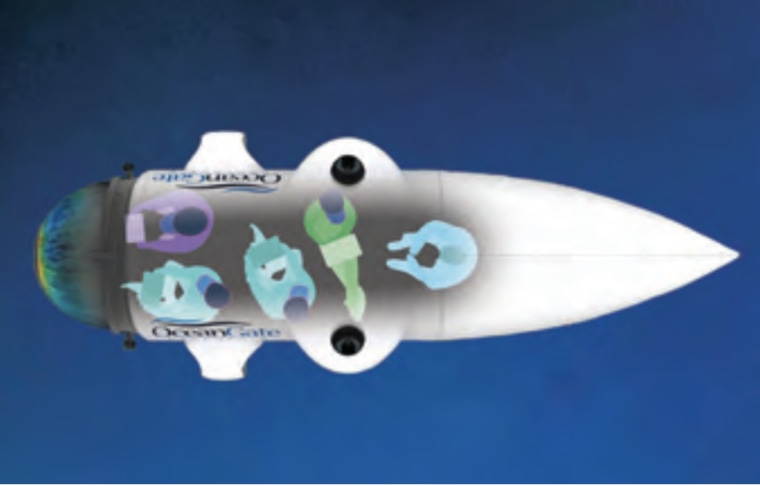
In a photograph published on a separate document, a similar configuration was depicted, with a caption saying, "Mission Specialists onboard Titan."
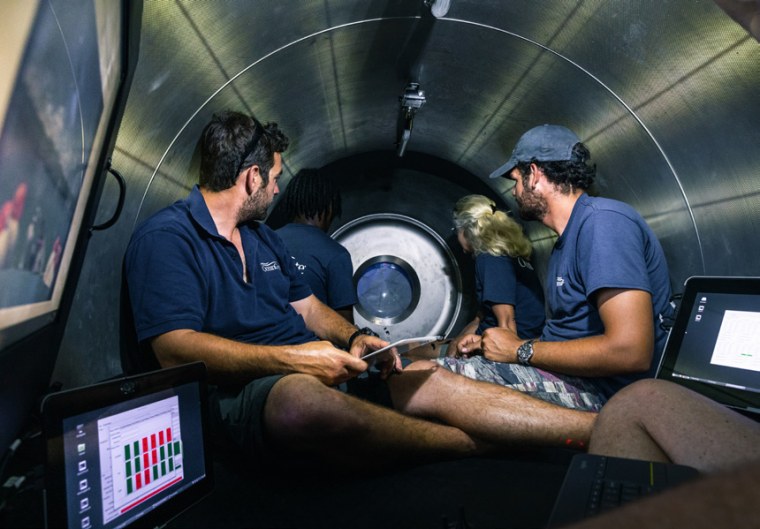
Visibility conditions have improved today for aerial search
Marlene Lenthang
Visibility conditions have significantly improved today for aircraft scouring the surface of the Atlantic Ocean for signs of the missing OceanGate submersible, the Coast Guard said.
“Visibility was very foggy yesterday with very little to no visibility, but was increasing today and they were expecting much better conditions from an aerial search perspective,” Chief Petty Officer Robert Simpson, with the 1st Coast Guard District Public Affairs Office, said Tuesday.
He said the weather at the scene today included 5- to 6-foot waves and 15-knot winds.
In addition to assets from the Coast Guard, Navy and Canadian partners already deployed, civilian research vessels are also volunteering to aid in the search.
OceanGate's CEO is aboard missing submersible
Stockton Rush, the CEO of OceanGate Expeditions, is aboard the missing submersible, the company confirmed Tuesday afternoon.
He is on board as a member of the crew, the company said.
So far search has yielded 'no results'
The extensive search for the missing tourist submersible near the Titanic wreck has yielded "no results," Capt. Jamie Frederick with the 1st Coast Guard District said in a briefing Tuesday.
He said so far the search has been on the surface and under the water using sonar buoys over an area the size of the state of Connecticut.
The search is ongoing with additional assets on the way to rescue the five people on board the Titan. There’s 41 hours of oxygen supply left on the vessel, "about 40 hours of breathable air," Frederick said.
France sends ship and robot to aid search for missing submersible
France is sending a ship called the Atalante to aid in the search for the missing OceanGate submersible, the French maritime ministry said Tuesday.
The ship was sent out in response to a request from American authorities Monday evening, the ministry said.
The ship, managed by the Ifremer research institute, was on a mission in the area, about a 48-hour drive from the Titanic wreckage. It'll arrive at the search site by 8 p.m. local time Wednesday.
A team from Ifremer will also arrive in Newfoundland on Wednesday morning to operate an exploration robot aboard the ship called Victor6000 that can dive to a depth of 4,000 meters.
Titan got ‘lost’ underwater last summer, CBS correspondent says
David Pogue, a CBS News correspondent, said that last year the submersible got “lost on the sea floor for a few hours,” when he was on an OceanGate expedition to visit the Titanic’s resting place.
“On my expedition last summer, they did indeed get lost for about 5 hours,” Pogue tweeted Monday. A segment on the trip aired in November .
Pogue wasn’t in the submersible, but was in a control room on a ship at the surface at the time.
He noted the submersible never lost communication with its mother ship. He said the Titan didn’t have a beacon similar to an aircraft’s emergency locator transmitter, but “such a beacon was discussed.”
“They could still send short texts to the sub, but did not know where it was. It was quiet and very tense, and they shut off the ship’s internet to prevent us from tweeting,” he said Monday. The company claimed it was to keep all channels open in case of a serious emergency, Pogue said.
Why the Titan wasn't safety classed
The missing submersible Titan wasn’t classed by an independent group that sets safety standards, as most chartered vessels are.
OceanGate said in a blog post in February 2019 that Titan wasn’t classed because its technology was so new and their innovation “falls outside of the existing industry paradigm.”
It said there’d be a “multi-year approval cycle due to a lack of pre-existing standards.”
Classing usually checks if vessels meet standards in buoyancy, number of life rafts and hull materials, the blog post said. OceanGate said that while classing has a safety value, it is “not sufficient to ensure safety.”
'No signal is very bad news,' expert says
Mithil Aggarwal
As a sweeping effort to locate the missing submersible continued, Pengfei Liu, professor of marine hydrodynamics at Britain's Newcastle University, told NBC News that the apparent lack of signal from the vessel is “very worrying.”
Ideally, a submersible should send a signal out every few minutes, he said, but it was not known if OceanGate had detected any recent signals after research vessel Polar Prince lost contact with the sub Sunday. OceanGate did not immediately respond to a request for comment from NBC News.
“No signal is very bad news,” the marine hydrodynamics professor said. An equipment failure due to an existing defect, depleted power or external damage could cause a signal outage, he said.
“If the submersible’s hull collapses under the enormous pressure, then survival chances are zero,” he said, adding that locating it in the first place would also be complicated had the vessel gotten stuck at the wreckage, since sonar systems would need to differentiate between the two.
Missing father and son Suleman and Shahzada Dawood pictured
Chantal Da Silva
Shahzada Dawood and son Suleman can be seen in the photo below.
The father, a prominent Pakistani businessman, and his son were identified as being onboard the vessel by family and colleagues.

The father and son, both British citizens, belong to one of Pakistan’s most prominent families, according to The Associated Press.
Their firm invests in agriculture, industries and the health sector, while Shahzada Dawood is also on the board of trustees for the California-based SETI Institute, which searches for extraterrestrial intelligence, according to the news agency.
Submersible was operated with a video game controller
Titan, the missing tourist submersible, was operated by a video game controller and had parts that were described as “off-the-shelf components.”
During a tour of the vessel in a CBS News segment that aired in November, OceanGate Expeditions CEO Stockton Rush pointed out some of these unexpected features, including a light fixture from CamperWorld and a makeshift toilet with a plastic bottle.
He brought out a Logitech game controller, saying that “we run the whole thing with this.” It was not immediately clear whether the submersible was operated with such a controller during the latest mission.
Game controllers can have a wide range of uses, including by pilots controlling drones, as well as in medical training.
OceanGate’s website describes the five-person submersible as a combination of “ground-breaking engineering and off-the-shelf technology,” the latter of which “helped to streamline the construction, and makes it simple to operate and replace parts in the field.”

Thoughts of crew and their families driving search efforts
In the desperate search for the missing vessel touring the shipwreck of the Titanic deep in the Atlantic, crews are thinking of the lives of the five people on board first and foremost.
“The thoughts of the crew members and their families really drive our crews forward and all of the partners that have been working this complex case to make sure we can continue to find them,” Coast Guard Rear Admiral John Mauger said Tuesday morning on NBC's "TODAY" show.
Factors such as oxygen levels, intense water pressure, and the remoteness of the area make the search difficult.
The ship went down Sunday with four days worth of oxygen. The wreckage of the Titanic is also at a depth of 13,000 feet — too deep for typical U.S. Navy subs, which typically go down to 2,000 or 3,000 feet, to descend to.
Canadian aircraft dropped a sonar buoy into the ocean listening for tapping or talking in an effort to pinpoint the submersible.
OceanGate Expeditions leading underwater search
OceanGate Expeditions is leading the underwater search for the missing Titanic tourist submersible because the deep-water exploration company “know[s] that site better than anybody else,” Rear Adm. John Mauger with the Coast Guard said on NBC's “TODAY” show Tuesday morning.
As the search for the 21-foot submersible entered the third day, Mauger said search crews have an “understanding” of where the submersible was operating and searches are being prioritized in those areas.
The wreckage of the Titanic sits 900 nautical miles east of Cape Cod, Massachusetts. Searches are underway with equipment the Coast Guard has brought to the area. The agency's current focus is on getting more assets and technical experts to the scene as fast as possible.
What did the Titanic expedition set out to achieve?
The submersible that disappeared Sunday was on only its third trip since OceanGate Expeditions began offering them in 2021.
On its website , the company said the expeditions are intended to "further document the Titanic and its rate of decay."
"Given the massive scale of the wreck and the debris field, multiple missions performed over several years will be required to fully document and model the wreck site," it says. "This longitudinal survey to collect images, videos, laser, and sonar data will allow objective assessment of the rate of decay and documentation of the process."
"Qualified explorers have the opportunity to join the expedition as Mission Specialist crewmembers whose Training and Mission Support Fees underwrite the mission, the participation of the science team, and their own training," the company states.
'You just rely on the thing being well made,' past survivor says
For Roger Mallinson, one of two people rescued in the deepest underwater rescue ever, according to Guinness World Records, the search for the missing Titanic tour sub has evoked difficult memories.
Almost 50 years ago, while working on laying a transatlantic telephone cable, Mallinson's submersible hurled toward the sea floor after the rope connecting it with the mothership snapped. Mallinson’s crew of two was trapped for over 80 hours on Aug. 29, 1973, at more than 1,500 feet below sea level as rescuers scrambled to locate his sub around 150 miles off Cork, Ireland.
“You just rely on the thing being well made,” he told NBC News. As hours passed and temperatures dropped, the crew struggled to keep the carbon dioxide levels low, relying on the extra oxygen tank that Mallinson said he had snuck in before the dive.
Locating a submersible is the first challenge he said, which could be done by sonar, but he added it could be difficult to locate if the sonar is obstructed. Bringing the crew back up is another challenge. “What complicates a rescue mission is, whether they lift it from the surface or they do it from the bottom by adding buoyancy to the submersible."
Regardless, the crew inside has little options at their disposal, he said. They could be transmitting via the sea telephone but if they haven't already, "something very drastic must have happened by now," he said.
Behind the U.S. Coast Guard's search
Phil McCausland
U.S. Coast Guard officials said they have "brought all assets that we have available" to the search to find the missing sub.
Speaking at a news conference on Monday afternoon, Rear Adm. John Mauger, who is leading the search, said the Coast Guard had brought in technical experts, dropped sonar buoys to listen for underwater noise and reached out to other government agencies and private contractors for aid and “to really better understand what an undersea search and rescue effort would look like."
In addition, Coast Guard officials said they had deployed two C-130 aircraft for an aerial search and that the sonar buoys can listen to a depth of 13,000 feet. The New York National Guard is providing a third C-130, and the Canadian Coast Guard provided a C-130, as well as a P8 Poseidon aircraft that has underwater detection capabilities.
The U.S. Coast Guard said it is also relying on commercial boat operators that were already in the nearby waters, as well as OceanGate’s mother ship, Polar Prince, for help.
Mauger added at the news conference that the Coast Guard is working to expand its capabilities to include an underwater search, as well.
Sub had up to 96 hours of oxygen supply, Coast Guard says
The search to find the missing submersible has become a race against time, with Coast Guard officials saying the sub had a 96-hour oxygen "reserve capacity."
“We really brought all assets that we have available to us to bear on finding the submersible and the people in it,” Rear Adm. John Mauger said at a news conference on Monday. “When something happens on the high seas, it gets complicated quickly," he added.
On a website page for the missing vessel, Titan, OceanGate Expeditions also describes the sub as having a “life support” of 96 hours for five crew members.
Asked how much of the 96 hours were left, Mauger said on Monday that officials anticipated there were somewhere between 70 to the full 96 hours available.
Map: Where is the Titanic located?
Max Butterworth
The Titanic wreck is located around 370 miles off the coast of Newfoundland, Canada in the North Atlantic Ocean. It sits on the ocean floor in two main sections at a depth of about 12,500 feet.
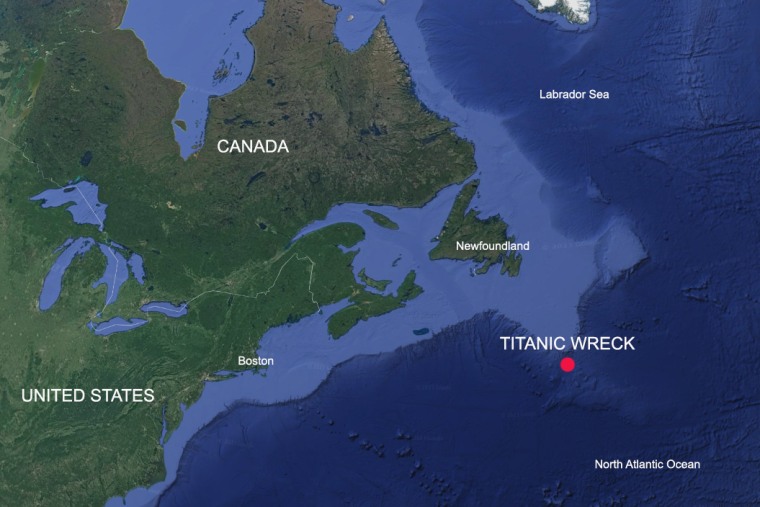
The luxury liner sank in 1912 on its maiden voyage to New York from Southampton, England after it hit an iceberg, taking the lives of over 1,500 passengers.
Since it’s discovery in 1985, the wreck has been the site of numerous expeditions, including a recent full-size digital scan , revealing the remains in never before seen detail.
The RMS Titanic Expedition Mission 5 submersible in the early hours of Sunday morning.
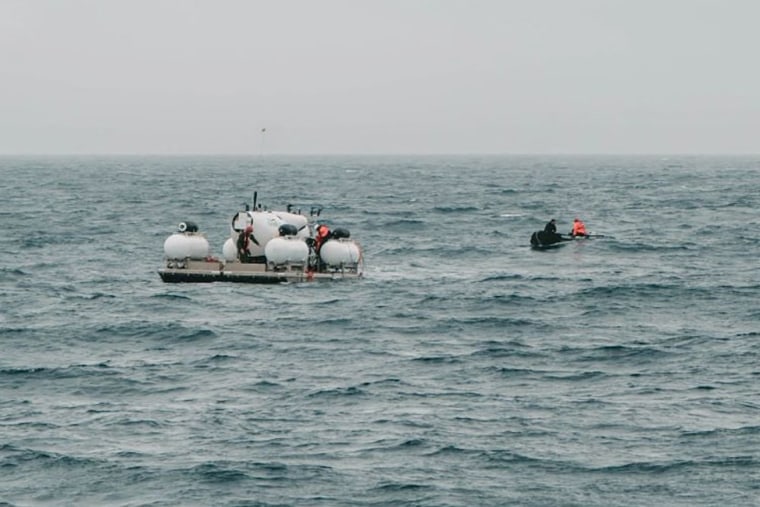
‘This could be the end’: NY writer describes trip on missing sub
Mike Reiss, a New York-based writer and producer who has worked on The Simpsons, says he was among the explorers to take a trip on the Titan sub last year.
"Yes, the sub that’s gone missing is the same one I took down to the Titanic. I wish everyone involved the best of luck," Reiss said in a Twitter post .
Speaking with BBC Breakfast in the U.K., Reiss said: “You sign a massive waiver that lists one way after another that you could die on the trip. They mention death three times on page one so it’s never far from your mind.”
“As I was getting onto the sub my thought was this could be the end," he said. “So nobody who’s in this situation was caught off guard. You all know what you are getting into."
What is a submersible?
The vessel that has gone missing is a submersible — not to be confused with a submarine.
Unlike a submarine, which is a fully autonomous craft "capable of renewing its own power and breathing air," a submersible relies on outside support, such as a surface vessel, a team onshore or sometimes even a larger submarine, according to OceanGate Expeditions, the company behind the Titanic tour dive.
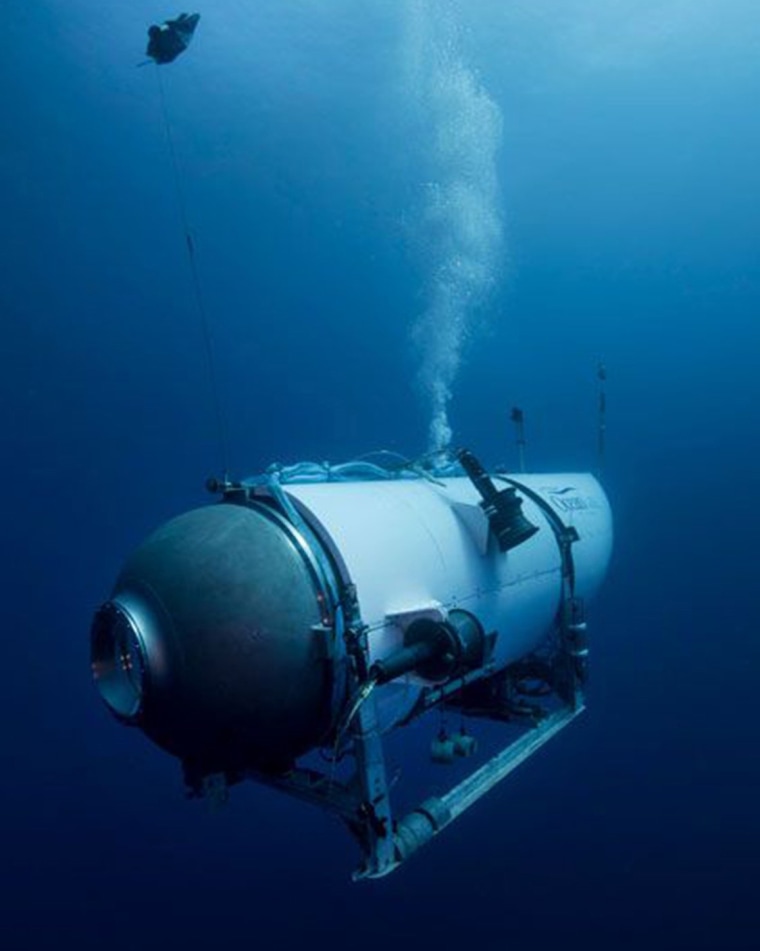
The vessel that went missing is named Titan, according to The Associated Press . NBC News was not immediately able to confirm this. On its website, OceanGate describes its Titan vessel as a "revolutionary carbon fiber and titanium submersible with a depth range of 4,000 meters (13,123 feet) that provides access to almost 50% of the world’s oceans."
"Titan ushers in a new era of crewed submersible exploration and is the only sub in the world that can take five crewmembers to these depths," it says.
Titanic tour firm offered up-close experience for $250,000
David Ingram
Modern in-person tourism at the Titanic is still in its infancy. The submersible that disappeared Sunday near the Titanic wreckage was on only its third trip since the company OceanGate Expeditions began offering them in 2021.
OceanGate had been promoting the third dive for months on its website and in Facebook posts, offering the chance to “follow in Jacques Cousteau’s footsteps and become an underwater explorer” — for the price of $250,000.
“ Become one of the few to see the Titanic with your own eyes,” the tour company said on its website. The ticket comes with a title: “mission specialist.”
Participants have included a chef, an actor, a videographer and someone who worked in banking, the company said on Facebook. One of the customers said on Instagram last year that it was a once-in-a-lifetime experience that lived up to her expectations.
First full-size scan showed Titanic wreck as never seen before
Henry Austin
Few people will ever get the opportunity to survey the wreckage of the Titanic up close — a bid that was at the heart of Sunday's mission when the Titan vessel went missing.
The first first full-size digital scan of the Titanic recently revealed the world’s most famous shipwreck as never seen before, however, and experts are hopeful it will provide more insight into how the liner came to sink in 1912.
What we know about missing billionaire Hamish Harding
Hamish Harding, a billionaire and the owner and chairman of Action Aviation, is among the five people onboard the missing vessel.
Action Aviation, established in 2004, is described on its website as a global sales company in business aviation.
A post Sunday on Harding’s Instagram account said he was joining OceanGate’s expedition “as a mission specialist” — typically a one-time crew member who pays a fee to join the effort.
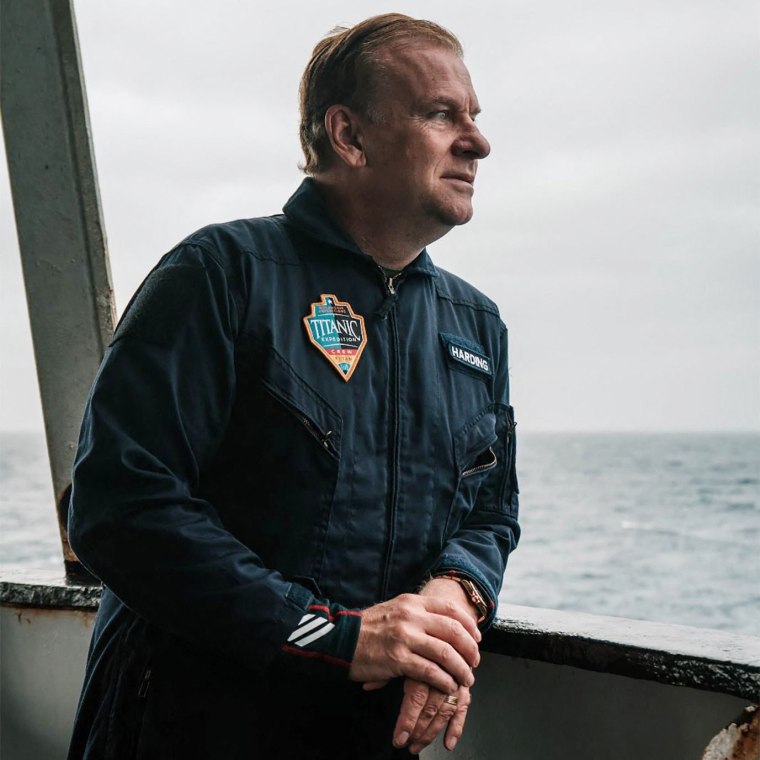
"Due to the worst winter in Newfoundland in 40 years, this mission is likely to be the first and only manned mission to the Titanic in 2023," Harding said in his post. He said that a "weather window" had just opened up and that the team was going to attempt a dive the following day.
"Until then we have a lot of preparations and briefings to do," he said.
Pakistani businessman and son were onboard sub, family says
A prominent Pakistani businessman, Shahzada Dawood and his son, Suleman, were among the five people onboard the vessel when it went missing, family and colleagues said.
“We are very grateful for the concern being shown by our colleagues and friends and would like to request everyone to pray for their safety,” the family said in a statement provided by Engro, a company where Dawood serves as vice chairman of the board.
"We, at Engro, remain in prayer for their swift and safe return, and will share any updates we may have as and when they come," the company said.
Hamish Harding , the billionaire owner and chairman of Action Aviation, was previously identified as one of the missing crew members. The other two people who were onboard the vessel have yet to be identified.
Search continues for missing Titanic tour submersible
The U.S. Coast Guard continues its search on Tuesday for the missing submersible that disappeared Sunday after it departed for a mission to explore the wreck of the Titanic.
The 21-foot submersible and its five-person crew started a dive Sunday morning from the Canadian research vessel Polar Prince, the Coast Guard said. But the Polar Prince lost contact with the vessel after an hour and 45 minutes and it remains missing.
The missing submersible — named Titan, according to The Associated Press — is part of a tour offered by private company OceanGate Expeditions exploring the Titanic wreckage, 900 nautical miles east of Cape Cod, Massachusetts.
- Election 2024
- Entertainment
- Newsletters
- Photography
- Personal Finance
- AP Investigations
- AP Buyline Personal Finance
- AP Buyline Shopping
- Press Releases
- Israel-Hamas War
- Russia-Ukraine War
- Global elections
- Asia Pacific
- Latin America
- Middle East
- Election Results
- Delegate Tracker
- AP & Elections
- Auto Racing
- 2024 Paris Olympic Games
- Movie reviews
- Book reviews
- Personal finance
- Financial Markets
- Business Highlights
- Financial wellness
- Artificial Intelligence
- Social Media
The Titan submersible imploded, killing all 5 on board, the US Coast Guard says
The race against time to find a submersible that disappeared on its way to the Titanic wreckage site entered a new phase of desperation as the final hours of oxygen left on board the tiny vessel ticked off the clock. (June 22)

A renowned Titanic expert, a world-record holding adventurer, two members of one of Pakistan’s wealthiest families and the CEO of the company leading an expedition to the world’s most famous shipwreck are facing critical danger aboard a small submersible that went missing in the Atlantic Ocean. (June 21)

A surveillance vessel has detected underwater noises in the area where rescuers are searching for a submersible that went missing in the North Atlantic while bringing five people down to the wreck of the Titanic, authorities said Wednesday. (June 21)
FILE - This undated image provided by OceanGate Expeditions in June 2021 shows the company’s Titan submersible. Rescuers are racing against time to find the missing submersible carrying five people, who were reported overdue Sunday night. (OceanGate Expeditions via AP, File)
- Copy Link copied
In this satellite image provided by Maxar Technologies, from top to bottom, the vessels Horizon Arctic, Deep Energy and Skandi Vinland search for the missing submersible Titan, Thursday, June 22, 2023 in the Atlantic Ocean. (Satellite image ©2023 Maxar Technologies via AP)
U.S. Coast Guard Rear Adm. John Mauger, commander of the First Coast Guard District, center at microphone, talks to the media Thursday, June 22, 2023, at Coast Guard Base Boston, in Boston. The U.S. Coast Guard says the missing submersible imploded near the wreckage of the Titanic, killing all five people on board. Coast Guard officials said during a news conference that they’ve notified the families of the crew of the Titan, which has been missing for several days. (AP Photo/Steven Senne)
U.S. Coast Guard Rear Adm. John Mauger, commander of the First Coast Guard District, talks to the media, Thursday, June 22, 2023, at Coast Guard Base Boston, in Boston. The missing submersible Titan imploded near the wreckage of the Titanic, killing all five people on board, according to the U.S. Coast Guard. (AP Photo/Steven Senne)
This photo provided by OceanGate Expeditions shows a submersible vessel named Titan used to visit the wreckage site of the Titanic. In a race against the clock on the high seas, an expanding international armada of ships and airplanes searched Tuesday, June 20, 2023, for the submersible that vanished in the North Atlantic while taking five people down to the wreck of the Titanic. (OceanGate Expeditions via AP)
FILE - OceanGate CEO Stockton Rush emerges from the hatch atop the OceanGate submarine Cyclops 1 in the San Juan Islands, Wash., on Sept. 12, 2018. Rescuers are racing against time to find the missing submersible carrying five people, who were reported overdue Sunday night, June 18, 2023. (Alan Berner/The Seattle Times via AP, File)
FILE - Submersible pilot Randy Holt, right, communicates with the support boat as he and Stockton Rush, left, CEO and Co-Founder of OceanGate, dive in the company’s submersible, “Antipodes,” about three miles off the coast of Fort Lauderdale, Fla., June 28, 2013. Rescuers are racing against time to find the missing submersible carrying five people, who were reported overdue Sunday night, June 18, 2023. (AP Photo/Wilfredo Lee, File)
FILE - In this image released by Action Aviation, the submersible Titan is prepared for a dive into a remote area of the Atlantic Ocean on an expedition to the Titanic on Sunday, June 18, 2023. Rescuers are racing against time to find the missing submersible carrying five people, who were reported overdue Sunday night. (Action Aviation via AP, File)
U.S. Coast Guard Rear Adm. John Mauger, commander of the First Coast Guard District, right, listens as Paul Hankins, U.S. Navy civilian contractor, supervisor of salvage, left, talks to the media, Thursday, June 22, 2023, at Coast Guard Base Boston, in Boston. The U.S. Coast Guard says the missing submersible imploded near the wreckage of the Titanic, killing all five people on board. Coast Guard officials said during the news conference that they’ve notified the families of the crew of the Titan, which has been missing for several days. (AP Photo/Steven Senne)
FILE - The U.S. Coast Guard Cutter Warren Deyampert is docked as a member of the Coast Guard walks past, Tuesday, June 20, 2023, at Coast Guard Base Boston, in Boston. Rescuers are racing against time to find the missing submersible carrying five people, who were reported overdue Sunday night, June 18, 2023. (AP Photo/Steven Senne, File)
FILE - The logo for an OceanGate Expeditions 2019 Titanic expedition is seen on a marine industrial warehouse office door in Everett, Wash., Tuesday, June 20, 2023. Rescuers are racing against time to find the missing submersible carrying five people, who were reported overdue Sunday night. (AP Photo/Ed Komenda, File)
CORRECTS SPELLING OF THE NAME TO HENRI, INSTEAD OF HENRY This photo combo shows from left, Shahzada Dawood, Suleman Dawood, Paul-Henri Nargeolet, Stockton Rush, and Hamish Harding are facing critical danger aboard a small submersible that went missing in the Atlantic Ocean. The missing submersible Titan imploded near the wreckage of the Titanic, killing all five people on board, the U.S. Coast Guard announced Thursday, June 22, 2023. (AP Photo/File)
U.S. Coast Guard Capt. Jamie Frederick, right, faces reporters as Royal Navy Lt Cdr Rich Kantharia, left, looks on during a news conference, Wednesday, June 21, 2023, at Coast Guard Base Boston, in Boston. The U.S. Coast Guard says sounds and banging noises have been heard from the search area for Titanic submersible. (AP Photo/Steven Senne)
U.S. Coast Guard Capt. Jamie Frederick, left, faces reporters as Carl Hartsfield, director and senior program manager Oceanographic Systems Laboratory, center, and Paul Hankins, U.S. Navy civilian contractor, supervisor of salvage, right, look on during a news conference, Wednesday, June 21, 2023, at Coast Guard Base Boston, in Boston. The U.S. Coast Guard says sounds and banging noises have been heard from the search area for Titanic submersible. (AP Photo/Steven Senne)
In this satellite image provided by Maxar Technologies, from top to bottom, the vessels L’Atalante, Horizon Arctic, Deep Energy, and Skandi Vinland search for the missing submersible Titan, Thursday June 22, 2023 in the Atlantic Ocean. (Satellite image ©2023 Maxar Technologies via AP)
U.S. Coast Guard Capt. Jamie Frederick, center at microphone, faces reporters during a news conference, Wednesday, June 21, 2023, at Coast Guard Base Boston, in Boston. The U.S. Coast Guard says sounds and banging noises have been heard from the search area for Titanic submersible. (AP Photo/Steven Senne)
FILE - This 2004 photo provided by the Institute for Exploration, Center for Archaeological Oceanography/University of Rhode Island/NOAA Office of Ocean Exploration, shows the remains of a coat and boots in the mud on the sea bed near the Titanic’s stern. Rescuers are racing against time to find the missing submersible carrying five people, who were reported overdue Sunday night, June 18, 2023. (Institute for Exploration, Center for Archaeological Oceanography/University of Rhode Island/NOAA Office of Ocean Exploration, File)
A submersible carrying five people to the Titanic imploded near the site of the shipwreck and killed everyone on board, authorities said Thursday, bringing a tragic end to a saga that included an urgent around-the-clock search and a worldwide vigil for the missing vessel.
The sliver of hope that remained for finding the five men alive was wiped away early Thursday, when the submersible’s 96-hour supply of oxygen was expected to run out following its Sunday launch and the Coast Guard announced that debris had been found roughly 1,600 feet (488 meters) from the Titanic in North Atlantic waters.
“This was a catastrophic implosion of the vessel,” said Rear Adm. John Mauger, of the First Coast Guard District.
After the craft was reported missing, the U.S. Navy went back and analyzed its acoustic data and found an anomaly that was “consistent with an implosion or explosion in the general vicinity of where the Titan submersible was operating when communications were lost,” a senior Navy official told The Associated Press on Thursday.
The official spoke on condition of anonymity to discuss a sensitive acoustic detection system.
The Navy passed on that information to the Coast Guard, which continued its search because the Navy did not consider the data to be definitive.
OceanGate Expeditions, the company that owned and operated the submersible, said in a statement that all five people in the vessel, including CEO and pilot Stockton Rush, “have sadly been lost.”
The others on board were two members of a prominent Pakistani family, Shahzada Dawood and his son Suleman Dawood; British adventurer Hamish Harding; and Titanic expert Paul-Henri Nargeolet.
“These men were true explorers who shared a distinct spirit of adventure, and a deep passion for exploring and protecting the world’s oceans,” OceanGate said in a statement. “We grieve the loss of life and joy they brought to everyone they knew.”
OceanGate has been chronicling the Titanic’s decay and the underwater ecosystem around it via yearly voyages since 2021. The company has not responded to additional questions about the Titan’s voyage this week.
The company’s office was “closed indefinitely while the staff copes with the tragic loss of their team member,” according to a statement Thursday by the Port of Everett, which is about 30 miles (50 kilometers) north of downtown Seattle and is home to OceanGate.
The Coast Guard will continue searching for more signs about what happened to the Titan.
While the Navy likely detected the implosion Sunday through its acoustics system, underwater sounds heard Tuesday and Wednesday — which initially gave hope for a possible rescue — were probably unrelated to the submersible. The Navy’s possible clue was not known publicly until Thursday, when The Wall Street Journal first reported it.
With a search area covering thousands of miles — twice the size of Connecticut and in waters 2 1/2 miles (4 kilometers) deep — rescuers all week rushed ships, planes and other equipment to the site of the disappearance.
Broadcasters around the world started newscasts at the critical hour Thursday with news of the submersible. The Saudi-owned satellite channel Al Arabiya showed a clock on air counting down to their estimate of when the air could potentially run out.
The White House thanked the U.S. Coast Guard, along with Canadian, British and French partners who helped in the search and rescue efforts.
“Our hearts go out to the families and loved ones of those who lost their lives on the Titan. They have been through a harrowing ordeal over the past few days, and we are keeping them in our thoughts and prayers,” it said in a statement.
The Titan launched at 6 a.m. Sunday and was reported overdue that afternoon about 435 miles (700 kilometers) south of St. John’s, Newfoundland. By Thursday, when the oxygen supply was expected to run out, there was little hope of finding the crew alive.
In 2021 and 2022, at least 46 people successfully traveled on OceanGate’s submersible to the Titanic site, according to letters the company filed with a U.S. District Court in Norfolk, Virginia, that oversees matters involving the shipwreck. But questions about the submersible’s safety were raised by former passengers .
One of the company’s first customers likened a dive he made to the site two years ago to a suicide mission.
“Imagine a metal tube a few meters long with a sheet of metal for a floor. You can’t stand. You can’t kneel. Everyone is sitting close to or on top of each other,” said Arthur Loibl, a retired businessman and adventurer from Germany. “You can’t be claustrophobic.”
During the 2 1/2-hour descent and ascent, the lights were turned off to conserve energy, he said, with the only illumination coming from a fluorescent glow stick.
The dive was repeatedly delayed to fix a problem with the battery and the balancing weights. In total, the voyage took 10 1/2 hours.
Nicolai Roterman, a deep-sea ecologist and lecturer in marine biology at the University of Portsmouth, England, said the disappearance of the Titan highlights the dangers and unknowns of deep-sea tourism.
“Even the most reliable technology can fail, and therefore accidents will happen,” Roterman said. “With the growth in deep-sea tourism, we must expect more incidents like this.”
Associated Press writers Jon Gambrell in Dubai, United Arab Emirates; Ben Finley in Norfolk, Virginia; Frank Jordans in Berlin; Danica Kirka in London; and John Leicester in Paris contributed to this report.

Search underway for Titanic tourist submarine with 70-96 hours of oxygen left: Live updates
Editor's note: This page reflects the search for the submersible as of Monday evening. For the latest updates on the race against time to locate and rescue the submersible, please follow our live updates for Tuesday, June 20 .
U.S. and Canadian rescue teams were searching Monday for a submersible carrying five people to the wreckage site of the Titanic after the submarine vanished deep in the Atlantic Ocean with four days' or less worth of survival capability .
The U.S. Coast Guard in Boston is leading the search for the missing watercraft, which the Joint Rescue Coordination Centre in Halifax, Nova Scotia, said was reported overdue Sunday night about 435 miles south of St. John’s, Newfoundland.
Rear Adm. John Mauger, commander of the First Coast Guard District, said two aircraft each from the U.S. and Canada were involved in the search, along with a commercial ship, and that further assets will be added as the pursuit continues into the night.
The operation's location − about 900 miles east of Cape Cod and up to 13,000 feet deep − complicates the task, as does the need to look both on the surface of the water and below, he said.
"It is a challenge to conduct a search in that remote area,'' Mauger said at a news conference, "but we are deploying all available assets to make sure that we can locate the craft and rescue the people on board.''
Contact lost with five crew members
The Coast Guard tweeted that the 21-foot submersible named "Titan,'' which left from St. John's, began its dive Sunday morning. The Polar Prince, the Canadian ship supporting the watercraft, lost contact with it about an hour and 45 minutes later.
OceanGate Expeditions , a Washington-based deep-sea exploration company, confirmed in a statement that it owned the submersible − a vessel in the submarine family but smaller and less self-sufficient than the classic military sub.
The company's expeditions to the Titanic wreck site include archaeologists and marine biologists. OceanGate also brings people who pay to come along, known as “mission specialists.”
They take turns operating sonar equipment and performing other tasks in the five-person submersible. The Coast Guard said Monday there was one pilot and four “mission specialists” aboard.
“We are deeply thankful for the extensive assistance we have received from several government agencies and deep sea companies in our efforts to reestablish contact with the submersible,” OceanGate said. “We are working toward the safe return of the crewmembers.”
Based on the company's information, Mauger said the submersible has a 96-hour emergency sustainment capability, which would include oxygen and fuel. "So we anticipate that there's somewhere between 70 and the full 96 hours available at this point,'' he said.
See the Titanic in whole new way: Full-sized, 3D digital scan shows scale of wreckage site
British tourist on board
OceanGate adviser David Concannon told The Associated Press the company lost contact with the submersible Sunday morning.
Concannon, who said he planned to go on the dive but had to cancel because of a matter regarding another client, said officials are rushing to get to the site a remotely operated vehicle that can reach a depth of 20,000 feet. The Titanic wreckage is believed to lie 12,500 feet deep.
Action Aviation said its company chairman, British businessman Hamish Harding, was one of the travelers on board . The experienced adventurer went into space on Blue Origin’s New Shepard rocket last June.
“Every attempt is being made for a rescue mission,'' Mark Butler, the company’s managing director, told the AP. "There is still plenty of time to facilitate a rescue mission. There is equipment on board for survival in this event. We’re all hoping and praying he comes back safe and sound.”
Richard Garriott, president of the Explorers Club − a New York-based group that supports scientific exploration − said he saw Harding a week ago and “his excitement was palpable.''
“I know he was looking forward to conducting research at the site,” Garriott wrote in a letter to members. “We all join in the fervent hope that the submersible is located as quickly as possible and the crew is safe.”
Search to continue overnight
The Coast Guard said late Monday that two searches by C-130 aircraft had been completed and the mission would continue though the night.
"The Polar Prince and @Rescue106 will continue to do surface searches throughout the evening," the First Coast Guard District tweeted .
The Guard said Canadian and US aircraft will resume looking underwater and on the ocean's surface Tuesday.
Titanic facts: When did it sink? How many people died?
On April 14, 1912, the Titanic collided with an iceberg in the North Atlantic on its maiden voyage from Southampton, England, to New York City. On April 15, at about 2:20 a.m., the ship sank.
More than 1,500 people died on the Titanic. Of the roughly 2,200 people aboard the ship, only 706 survived.
The majority of the people killed were members of the crew and third-class passengers. There were 710 deaths in the third class and 700 deaths among the crew.
How many people died on the Titanic?: Facts about the death toll and the survivors
Tourists added for expeditions
In 2021, OceanGate Expeditions began what it expected to become an annual voyage to the wreckage. The company had said it would include about 40 paying tourists to the team of archaeologists and marine biologists on the trips.
The initial group of tourists spent $100,000 to $150,000 apiece.
Contributing: The Associated Press
Watch CBS News
What we know about the tourist sub that disappeared on an expedition to the Titanic
By Emily Mae Czachor
Updated on: June 23, 2023 / 11:35 PM EDT / CBS News
Five people on board the tourist submarine that disappeared on an expedition to explore the Titanic shipwreck over the weekend did not survive a "catastrophic loss of the pressure chamber," officials said Thursday.
The announcement came after the U.S. Coast Guard said the massive search underway in the North Atlantic had located a debris field on the sea floor, which was confirmed to be pieces of the missing sub .
"The debris field is consistent with a catastrophic implosion of the vessel," Rear Adm. John Mauger of the Coast Guard said at a briefing, offering "deepest condolences to the families." A spokesperson for OceanGate Expeditions, the company behind the voyage, told reporters that the passengers, including OceanGate CEO Stockton Rush, "have sadly been lost."
Here's what we know so far about the submersible craft and what led up to this point.
What happened?
A five-person crew on a submersible named Titan, owned by OceanGate Expeditions, submerged on a dive to the Titanic wreckage site Sunday morning, and the crew of the Polar Prince research ship lost contact with the sub about an hour and 45 minutes later, the Coast Guard said .
The Coast Guard first alerted mariners about the missing sub Sunday night, saying a "21 foot submarine" with a white hull was overdue and giving its last known position. "VESSELS IN VICINITY REQUESTED TO KEEP A SHARP LOOKOUT, ASSIST IF POSSIBLE," the alert message read.
The sub was lost in an area about 900 miles east of Cape Cod, in the North Atlantic, in water with a depth of about 13,000 feet, which is about level with the depth of the Titanic wreck . Amid growing concern about its dwindling supply of breathable air , search and rescue efforts by a unified command composed of several international agencies ramped up accordingly.
The five people aboard included an operator — later identified as Stockton Rush, the CEO of OceanGate Expeditions — and four mission specialists, a term the company uses for its passengers, who paid up to $250,000 for a seat.
For days, the fate of the sub and its passengers was a mystery.
But after the debris was found, a U.S. Navy official said the Navy had detected "an acoustic anomaly consistent with an implosion" shortly after the sub lost contact with the surface Sunday, CBS News national security correspondent David Martin reported. The information was relayed to the Coast Guard, which used it to narrow the radius of the search area, the official said.
Such an implosion, under the intense pressure of the depths of the sea , would have destroyed the vessel almost instantly, experts explained.
"in a fraction of a second, it's gone," Will Kohnen, chairman of the professional group the Marine Technology Society Submarine Committee, told the Reuters news agency.
"It implodes inwards in a matter of a thousandth of a second," Kohnen said. "And it's probably a mercy, because that was probably a kinder end than the unbelievably difficult situation of being four days in a cold, dark and confined space. So, this would have happened very quickly. I don't think anybody even had the time to realize what happened."
The Coast Guard is leading the investigation into the incident, and the National Transportation Safety Board said Friday it will assist.
Who were the passengers aboard the sub?
CBS News confirmed that the five people aboard the submersible were Hamish Harding , a 59-year-old British billionaire, business owner and explorer; British-Pakistani businessman Shahzada Dawood and his son, Suleman; French explorer Paul-Henri Nargeolet, who had made multiple dives over the years to explore the Titanic; and Stockton Rush, the CEO of OceanGate Expeditions, who was serving as pilot.
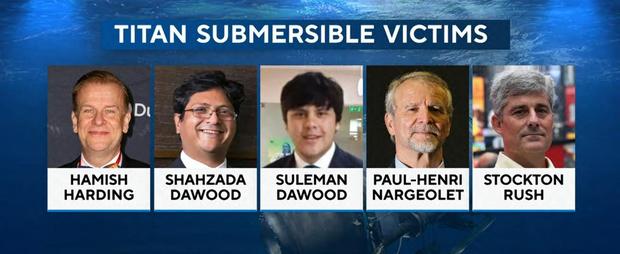
Just ahead of the Coast Guard briefing Thursday afternoon, a statement issued by OceanGate spokesperson Andrew Von Kerens offered condolences to the families of the Titan crew and recognized that all five people on board the submersible were believed to be dead.
"These men were true explorers who shared a distinct spirit of adventure, and a deep passion for exploring and protecting the world's oceans," the company said in the statement. "Our hearts are with these five souls and every member of their families during this tragic time. We grieve the loss of life and joy they brought to everyone they knew."
When the Coast Guard confirmed the sub's likely implosion on Thursday, Mauger said they were communicating with consulates general in both the U.K. and France.
The Dawood family, of the large Pakistan-based global business conglomerate Dawood Group, issued a statement Tuesday confirming their family members were on the expedition.
"Please continue to keep the departed souls and our family in your prayers during this difficult time of mourning," the Hussain and Kulsum Dawood family said Thursday in a statement through the Dawood Foundation. "We are truly grateful to all those involved in the rescue operations. ... The immense love and support we receive continues to help us endure this unimaginable loss."
Nargeolet, a renowned French explorer and former diver for the French Navy who was part of the first expedition to visit the Titanic wreck in 1987, was returning for another dive aboard the Titan submersible.
In a Facebook post on Monday, Rory Golden, an explorer who became the first Irish diver to visit the Titanic wreckage in 2000, said he was part of the voyage but was not on the submersible that went missing.
Search and rescue efforts
Authorities said early Thursday morning that a Canadian vessel, Horizon Arctic, had deployed a remotely operated underwater vehicle that reached the sea floor . The ROV ultimately located what the Coast Guard originally described as a debris field on the sea floor, which included identifiable pieces of the sub, authorities confirmed that afternoon.
"This morning, an ROV, or remote operated vehicle, from the vessel Horizon Arctic, discovered the tail cone of the Titan submersible approximately 1,600 feet from the bow of the Titanic on the sea floor," said Mauger at a news briefing. "The ROV subsequently found additional debris. In consultation with experts from within the unified command, the debris is consistent with the catastrophic loss of the pressure chamber."
"Upon this determination, we immediately notified the families," he added. "On behalf of the United States Coast Guard and the entire unified command, I offer my deepest condolences to the families. I can only imagine what this has been like for them and I hope that this discovery provides some solace during this difficult time."
Mauger said authorities were "still working to develop the details for the timeline involved with this casualty and the response," and referenced the "incredibly complex operating environment along the sea floor, over two miles beneath the surface."
Paul Hankins, an undersea expert for the U.S. Navy, explained during the news conference that crews discovered "five different major pieces of debris that told us that it was the remains of the Titan." These pieces included, initially, the nose cone, which was outside of the pressure hull.
"We then found a large debris field," Hankins said. "Within that large debris field, we found the front end bell of the pressure hull. That was our first indication that there was a catastrophic event."
A second, smaller debris field was located shortly after, and the debris found there "comprised the totality of that pressure vessel," Hankins said.
"The debris field is consistent with a catastrophic implosion of the vessel," he said, adding that the team will continue to map the debris field area.
Asked by a reporter what the prospects were for recovering the passengers, Mauger said, "This is an incredibly unforgiving environment down there on the sea floor, and the debris is consistent with a catastrophic implosion of the vessel. So we'll continue to work and continue to search the area down there, but I don't have an answer for prospects at this time."
Discovering the Titan debris came after multiple agencies from the U.S. and Canada spent days scouring thousands of square miles of open ocean in search of the missing sub.
The U.S. Coast Guard announced Wednesday that underwater noises were detected in the search area and that searches involving ROVs were focusing on the area where the noises were heard .
On Wednesday, three more vessels had arrived to join the search, including one with side-scan sonar capabilities designed to create images of large sections of the sea floor, the Coast Guard said in a tweet . That vessel began conducting search patterns alongside at least two others, as multiple military and other agencies worked together under a unified command.
Frederick said Wednesday there were five "surface assets" involved in the search , and another five were expected to join the operation within the next 24 to 48 hours. He said the team also had two ROVs "actively searching," with several more due to arrive to join the search Thursday.
The Coast Guard said it had C-130 aircraft searching for the sub, and that the Rescue Coordination Center Halifax was assisting with a P-8 Poseidon aircraft, which has underwater detection capabilities. Canadian P-3s were also involved in the operation and deployed sonar buoys.
Just after midnight Wednesday, officials said aircraft had detected underwater noises in the search area, and underwater search operations were relocated as a result, though the origin of the noises remained unknown. The sounds were picked up several times Tuesday night and Wednesday morning, according to the Coast Guard.
"With respect to the noises, specifically, we don't know what they are, to be frank with you," Frederick said. "The P-3 detected noises, that's why they're up there, that's why they're doing what they're doing, that's why there are sonar buoys in the water."
News of the vanished submersible and subsequent rescue mission originally broke Monday morning. At the time, Lt. Jordan Hart of the Coast Guard in Boston told CBS News that personnel there were leading the rescue mission, and focusing on waters off Newfoundland in eastern Canada.
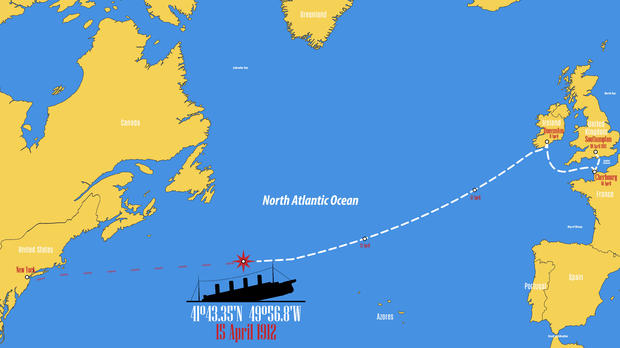
The Boston Regional Coordination Center was managing the rescue operation, as the location of the Titanic shipwreck falls within the Boston coordination center's territory, according to a map of jurisdictions along the East Coast of North America.
That combined search area grew to about twice the size of the state of Connecticut, and the subsurface search extended down as far as 2 and a half miles deep, Frederick said, stressing that the search and rescue teams were dealing with an incredibly complex set of circumstances.
"We also have to factor in the ever-changing weather conditions, currents and sea states that expand the search area every hour," he said earlier in the week. "There's an enormous complexity associated with this case due to the location being so far offshore and the coordination between multiple agencies and nations. We greatly appreciate the outpouring of support and offers to provide additional equipment."
What caused the noises?
Frederick acknowledged that the sounds detected underwater by Canadian aircraft could have been caused by multiple sources.
Following the discovery of the sub debris on the sea floor, a U.S. Navy source told CBS News that the implosion would be inconsistent with banging noises heard at 30-minute intervals. Those noises, the official said, are now assessed as having come from other ships in the area.
Carl Hartsfield, an expert in underwater acoustics and the director of the Woods Hole Oceanographic Institution, which is on-site at the search area as a consultant, explained that it can be challenging to differentiate between "human sounds" and "nature sounds" coming from beneath the surface.
"The ocean is a very complex place, obviously, human sounds, nature sounds, and it's very difficult to discern what the sources of those noises are at times," Hartsfield said.
Before the sub was found, Chris Roman, an associate professor of oceanography at the University of Rhode Island, told CBS News that, technically, it was possible that sounds from inside a submersible could have been detected, but that wasn't the only potential source of the noise.
"Sound travels very efficiently underwater. If people were intentionally making noises within the sub, it's very likely they could be detected with a sound buoy, and that position can be translated into a new search area," Roman said. But he also noted that, as Frederick mentioned in his briefing, "there's a lot of other things in the ocean that make noises."
The submarine
The unique submersible craft that disappeared was owned by OceanGate Expeditions , a company that deploys manned submarines for deep sea exploration and has in the past advertised this particular sub's voyages to carry tourists down to the wreckage of the RMS Titanic for $250,000 per seat.
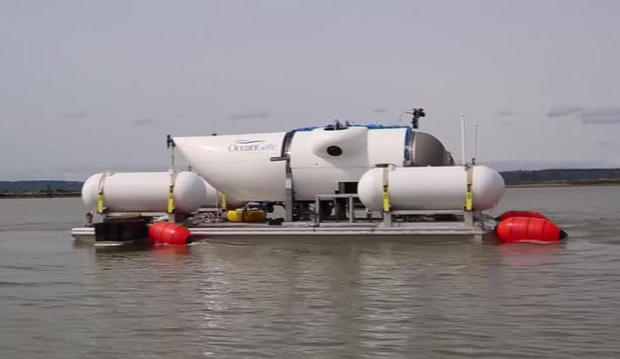
More than a century after the Titanic sank in April 1912, the wreck lies on the ocean floor about 400 miles southeast of the Newfoundland coast.
OceanGate said recently on its website and on social media that its expedition to the shipwreck was "underway," describing the seven-night trip as a "chance to step outside of everyday life and discover something truly extraordinary." In addition to one ongoing expedition, the company had planned two others for the summer of next year, according to the site.
Because of the sub's oxygen capacity, it can only be fully submerged for a portion of the weeklong voyage. The sub has emergency oxygen and a 96-hour sustainment capability if there's an emergency aboard, Mauger said.
In a statement Monday after news broke of the missing sub, OceanGate confirmed the missing submersible was theirs and that a rescue operation had been launched to find and recover it. The company said it was "exploring and mobilizing all options to bring the crew back safely."
"For some time, we have been unable to establish communications with one of our submersible exploration vehicles which is currently visiting the wreck site of the Titanic," said Andrew Von Kerens, a spokesperson for OceanGate. "We pray for the safe return of the crew and passengers, and we will provide updates as they are available."
Inside the Titan
Dubbed the Titan, OceanGate's deep sea vessel, was said to be the only five-person submersible in the world with the capabilities to reach the Titanic's depth, nearly 2 and a half miles beneath the ocean's surface, CBS "Sunday Mornings" correspondent David Pogue reported last year.
BBC News reported that the vessel typically carries a pilot, three paying guests and another person described as a "content expert" by the company. OceanGate's site says the Titan, weighing around 23,000 pounds, has the ability to reach depths of up to 4,000 meters — over 13,000 feet — and has about 96 hours of life support for a crew of five people.
Last summer, Pogue accompanied the Titan crew on the journey from Newfoundland to the site where the Titanic as lost. Several dive attempts had to be canceled when weather conditions indicated it may not be safe. At the time, he described the Titan as a one-of-a-kind submersible craft made from thick carbon fiber and coated on both ends by a dome of titanium.
In 2018, a former employee of OceanGate Expeditions, submersible pilot David Lochridge, voiced concerns about the safety of the Titanic tour sub and filed a lawsuit against the company .
Lochridge, who was fired by OceanGate and sued by the company for allegedly disclosing confidential information in a whistleblower complaint to the Occupational Safety and Health Administration, said in a court filing that the Titan would carry passengers as deep as 4,000 meters even though that depth had never been reached in a sub with its type of carbon fiber hull. According to his claim, he learned the vessel was built to withstand a certified pressure of 1,300 meters, although OceanGate planned to take passengers to 4,000 meters.
Lochridge was not the only skeptic. The same year his complaint was filed, other industry leaders approached OceanGate with questions about the safety of its submersible. William Kohnen, president and CEO of Hydrospace Group, outlined his concerns in a 2018 letter to OceanGate, originally published by The New York Times, that warned of potentially "catastrophic" issues with the "experimental" sub, which was not certified. Kohnen told CBS News on Wednesday that although he did not send it, the letter was leaked to OceanGate and prompted the company to "amend a number of details that made sure the public knew" the submersible had not received its certification.
"The letter to Oceangate was meant as a professional courtesy to the CEO expressing industry concerns that the company was not following a traditional classification route for the certification of the submersible," Kohnen said. "The industry operates along an established and dynamic set of safety regulations and protocols that have served the submersible industry worldwide."
Ahead of his planned dive last summer, Pogue recalled signing paperwork that read, in part, "This experimental vessel has not been approved or certified by any regulatory body, and could result in physical injury, emotional trauma, or death."
Space inside the submarine was similar to the interior of a minivan, and, with just one button and a video game controller used to steer it, the vessel "seemed improvised, with off-the-shelf components," Pogue said.
On his voyage, the sub was lost for a few hours , Pogue said.
"There's no GPS underwater, so the surface ship is supposed to guide the sub to the shipwreck by sending text messages," he reported at the time. "But on this dive, communications somehow broke down."
You may remember that the @OceanGateExped sub to the #Titanic got lost for a few hours LAST summer, too, when I was aboard…Here’s the relevant part of that story. https://t.co/7FhcMs0oeH pic.twitter.com/ClaNg5nzj8 — David Pogue (@Pogue) June 19, 2023
Were conditions right for the dive?
G. Michael Harris, founder of RMS Titanic, Inc. — a company that salvages artifacts from the Titanic wreckage — told CBS News on Tuesday evening that Titanic expeditions are generally conducted within a "three-month weather window" between the end of June and September, when the ocean waters are at their calmest.
Harris, who has led several expeditions to the wreckage site, questioned why the Titan's dive was conducted as early as Sunday.
"Right now, it's really early in the season. I'm not sure why OceanGate went out this soon," Harris said.
Harris also noted that when he conducts diving expeditions, he uses a transponder system, something that he believed the Titan likely did not have.
"It's a net that we navigate in so that we know where we are at all times on the wreck of the Titanic," Harris said. "We're in constant communication with the vessel up top."
Harris said the Titan was "put on a sled and dumped in the water and their only navigation is from the support ship up top."
"I don't adhere to that myself, personally," Harris said.
Harris noted that he has worked with Nargeolet, who is listed as director of underwater research for RMS Titanic, for the past 30 years, describing him as an "all-around good guy."
Who was Hamish Harding?
Harding, the first of the passengers to be publicly identified, had previously posted on social media about joining the Titanic shipwreck expedition.
In a post shared to his Facebook page on Saturday, Harding wrote: "I am proud to finally announce that I joined OceanGate Expeditions for their RMS TITANIC Mission as a mission specialist on the sub going down to the Titanic."
I am proud to finally announce that I joined OceanGate Expeditions for their RMS TITANIC Mission as a mission specialist... Posted by Hamish Harding on Saturday, June 17, 2023
"Due to the worst winter in Newfoundland in 40 years, this mission is likely to be the first and only manned mission to the Titanic in 2023," Harding's Facebook post continued. "A weather window has just opened up and we are going to attempt a dive tomorrow. We started steaming from St. Johns, Newfoundland, Canada yesterday and are planning to start dive operations around 4am tomorrow morning. Until then we have a lot of preparations and briefings to do."
That post was Harding's most recent social media update related to the submarine trip. It included multiple photographs of him, including one that showed Harding signing his name on a banner that read "Titanic Expedition Mission V" and another that pictured the submersible vessel itself.
Richard Garriott de Cayeux, president of The Explorers Club, where Harding helped found the board of trustees, said they had spoken just a week earlier about the expedition.
"When I saw Hamish last week at the Global Exploration Summit, his excitement about this expedition was palpable. I know he was looking forward to conducting research at the site," he said in a letter to club members after the sub's disappearance.
Harding was a veteran adventure tourist who also traveled to space aboard a Blue Origin rocket last year. Two years ago, he made it to the deepest part of the ocean, traveling with U.S. explorer Victor Vescovo to the floor of the Mariana Trench, 35,876 feet below the sea surface. That trip, in a $48 million submersible, earned both explorers the Guinness World Record for the longest distance traveled at the deepest part of the ocean by a crewed vessel.
"It was potentially scary, but I was so busy doing so many things — navigating and triangulating my position — that I did not really have time to be scared," Harding told The Week after that excursion.
This is an updated version of an article originally published on Monday, June 19. Reporting contributed by Emmet Lyons, Roxana Saberi, Alex Sundby, Aimee Picchi, Aliza Chasan, Li Cohen, Caroline Hinson, Anna Noryskiewicz, Analisa Novak and other CBS News staff.
- Newfoundland
- United States Coast Guard
Emily Mae Czachor is a reporter and news editor at CBSNews.com. She covers breaking news, often focusing on crime and extreme weather. Emily Mae has previously written for outlets including the Los Angeles Times, BuzzFeed and Newsweek.
More from CBS News
- Skip to main content
- Keyboard shortcuts for audio player
Here's the latest on the missing Titan submersible and the race to rescue passengers
Emily Olson
Ayana Archie

U.S. Coast Guard Capt. Jamie Frederick speaks during a press conference about the search efforts for the submersible that went missing near the wreck of the Titanic in Boston on Tuesday. Joseph Prezioso/AFP via Getty Images hide caption
U.S. Coast Guard Capt. Jamie Frederick speaks during a press conference about the search efforts for the submersible that went missing near the wreck of the Titanic in Boston on Tuesday.
For the latest updates on the search for the missing submersible, head here.
As of Tuesday night, five passengers aboard a submersible in the North Atlantic are the subject of an international search. The vessel is owned by OceanGate, and designed to explore the site of the Titanic.
Authorities estimate there's only enough oxygen in the submersible to last for less than two days.
Here's what we know:
When and where did the vessel go missing?

Missing submersible: Rescuers race to find Titan after detecting underwater noises
The 21-foot vessel, which is named Titan , lost communication with its control center on Sunday morning, roughly 1 hour and 45 minutes into its scheduled dive, the U.S. Coast Guard wrote on Twitter.
Titan had been deployed by a Canadian expedition ship, the Polar Prince, about 435 miles (380 nautical miles) south of St. John's in Newfoundland, not far from the site of the iconic shipwreck.
Why was the submersible diving?
The missing vessel is owned by OceanGate, a company based in Washington state that offers underwater voyages to explore the remains of the Titanic from the seafloor.

'Tiny sub, big ocean': Why the Titanic submersible search is so challenging
OceanGate is a major chronicler of the ship's decay and shared the first-ever full-size digital scan of the wreck site in May.
OceanGate is also a pioneer in the deep sea tourism economy. For $250,000 a person, the company takes adventurers on a deep sea tour lasting eight days and stretching hundreds of miles.
From St. John's in Newfoundland, Canada, explorers travel 380 miles offshore and 2.4 miles below the surface.

A remarkable new view of the Titanic shipwreck is here, thanks to deep-sea mappers
If successful, they can catch a glimpse of what's left of the 1912 iceberg-crash disaster, which took the lives of all but 700 of the Titanic's 2,200 passengers and crew. Today, the ship is slowly succumbing to a metal-eating bacteria , which may cause it to fully disintegrate in a matter of decades.
Mike Reiss , who joined OceanGate to glimpse the deteriorating wreck in 2022, said the trip is less tourism than it is true exploration — and the people who dare to try it are made well aware of the risks.
"You sign a massive waiver that lists one way after another that you could die on the trip," he told the BBC in an interview Tuesday. "They mention death three times on page one. So it's never far from your mind. As I was getting on to the sub, that was my thought: That this could be the end."
'You sign a massive waiver that you could die on the trip' As search teams race against time to find the small sub that went missing during a dive to the wreck of the Titanic, writer Mike Reiss told #BBCBreakfast about taking the same trip last year https://t.co/FNeiSyZfLl pic.twitter.com/2STvm7YDbz — BBC Breakfast (@BBCBreakfast) June 20, 2023
Who was on board?
The Titanic-touring vessel contained one pilot and four paid passengers called "mission specialists," according to the U.S. Coast Guard. "Mission specialists" take turns operating sonar equipment and performing the tasks necessary to complete a dive.
Among those paid passengers was British businessman Hamish Harding, according to a statement from Action Aviation , a company where Harding works as chairman.
Harding holds three Guinness World Records, including the longest duration (4 hours, 15 minutes) at a full ocean depth (2.88 miles) by a crewed vessel. He has also trekked to the South Pole, circumnavigated the Earth in less than 48 hours and visited space in Blue Origin's New Shepard rocket .

Newly released footage of a 1986 Titanic dive reveals the ship's haunting interior
Shahzada Dawood and his son Suleman, two members of a prominent Pakistani family known for investing, were also on board the vessel, according to a statement shared with outlets such as The Associated Press .
A fourth person on board is Paul-Henri Nargeolet, a French expert on the Titanic, his agent has confirmed to several outlets, including The New York Times . Nargeolet serves as director for RMS Titanic Inc. , the U.S. company that owns the salvage rights to the Titanic site. The Times reports that Nargeolet has completed over 35 dives to the wreckage, including a previous Titan expedition.
Titan's pilot and the fifth person has been identified as OceanGate CEO Stockton Rush.
Why did the vessel go missing?

This 2004 photo shows the remains of a coat and boots in the mud on the sea bed near the Titanic's stern. Institute for Exploration, Center for Archaeological Oceanography/AP hide caption
This 2004 photo shows the remains of a coat and boots in the mud on the sea bed near the Titanic's stern.
It's still unclear why the submersible lost communication with its control crew on the expedition ship.
Ahead of its launch, OceanGate said it would rely on the satellite-based internet company Starlink for the communications necessary for carrying out the expedition. A text-message-based system relying on underwater acoustic positioning normally allows the Titan to communicate with the control ship, according to an Australian researcher writing for The Conversation.
OceanGate says its vessels are "equipped with some basic emergency medical supplies and 96 hours of life support," according to the company's website .

Pop Culture Happy Hour
'titanic' was king of the world 25 years ago for a good reason.
And for good reason: This is not the first time an OceanGate submersible has gotten lost, according to David Pogue, a correspondent for CBS Sunday Morning .
Pogue, who traveled on an OceanGate expedition to see the Titanic last summer, recalled that the control room was unable to help the submersible locate the wrecked liner for roughly three hours due to technical difficulties.

James Cameron aims to finally put that 'Titanic' door debate to rest, 25 years later
"The difference this year is that it seems like they lost contact with the ship," Pogue told NPR. "They can't even reach the sub and that's really scary."
He added that factors like bad weather and mechanical issues mean the submersible vessels rarely make it to the Titanic, despite the expensive price tag. This season has seen zero successful dives, Pogue said.
What's it like inside the Titan?
Videos from Pogue's initial CBS Sunday Morning report on OceanGate show him reading from the "mission specialist" waiver, which points out that Titan has not been approved or certified "by any regulatory body."
"I couldn't help noticing how many pieces of this sub seem improvised," Pogue adds.
“Hope is quickly fading” to find the missing submersible that left for a mission to the wreckage of the Titanic, says @Pogue , who went on board the same sub last year. He says it could be impossible to rescue the passengers if the sub is still underwater. pic.twitter.com/n0NTsLYkIJ — CBS Mornings (@CBSMornings) June 20, 2023
A single plastic bottle and some Ziploc bags stand in for a toilet. An Xbox game controller and an elevator-esque up/down button serve as the vessel's primary controls. The interior lighting is from Camping World, notes OceanGate founder Stockton Rush.
In whole, the space inside is about the size of a minivan, not tall enough for someone to fully stand.
In an interview with NPR's All Things Considered , Pogue said there are seven different ballast mechanisms that can help the Titan rise from great depths.
"Some of these work even if the power is out or even if everyone on board is passed out," Pogue said.
The fact that rescue crews haven't spotted the vessel on the ocean's surface might mean that the Titan is snagged or its 5-inch-thick carbon fiber hull was penetrated, Pogue said.
Either situation could be catastrophic for the people on board.
What's the latest on the search efforts?
As of Tuesday at 1 p.m. ET, the Titan had about 40 hours of oxygen left, said Capt. Jamie Frederick, a response coordinator for the U.S. Coast Guard overseeing the search.
A unified command including the U.S. Coast Guard, the U.S. Navy, the Canadian Coast Guard and OceanGate are working together to steer the search efforts, but so far, has come up unsuccessful, Frederick said during a press conference.

TED Radio Hour
Robert ballard: what hidden underwater worlds are left to discover.
"We wouldn't be searching and putting all effort out there" if the submersible wasn't recoverable, Frederick said, adding that the crews contain the "nation's best experts."
Several Canadian Coast Guard vessels were en route to the scene, as were several additional private vessels.
The teams in place are continuing to use aircraft to scan the ocean, an effort that may get easier on Tuesday as Monday's heavy fog was lifting, said a Coast Guard spokesperson.
Sonar devices are also being employed to detect possible underwater sounds coming from the submersible. Crews have covered 7,600 square miles — an area bigger than the state of Connecticut.

How (and why) this man plans to live underwater for 100 days
The teams also expanded their underwater search capability on Tuesday by adding a remotely operated vehicle in order to reach lower depths. That search is ongoing.
But even if the crews can locate the vessel at a low depth, hauling it up to the surface is another task. The Titan could be at a depth of over 13,000 feet and a distance of over 900 miles offshore. Frederick said the search and rescue crews did not yet have salvage equipment in place.
David Marquet, a retired U.S. Navy submarine captain, told NPR's Morning Edition that the odds of survival are "about 1%."
A former OceanGate executive voiced safety concerns years ago
A fired OceanGate employee urged for additional testing on the hull of the Titan years earlier, according to a 2018 lawsuit. Former director of marine operations David Lochridge sent a report he authored in January 2018, which voiced concerns that the hull used carbon fiber and not a metallic composition. The Titan was being designed to travel 4,000 meters below the surface, which had never been done by an OceanGate vessel with a hull made of carbon fiber, Lochridge stated in court documents.
Furthermore, Lochridge said vessel's viewport, which allows passengers to look outside, was only certified by the manufacturer to withstand pressures at 1,300 meters below the surface. That was due to OceanGate's design of the vessel, which did not meet federal standards, according to the complaint.
Lochridge said he encouraged a nondestructive scan of the hull to check for any defects, rather than solely relying on acoustic monitoring. According to Lochridge, acoustic monitoring only detects a problem in the hull right before it fails.
Lochridge said his concerns were ignored and he was told equipment did not exist for the type of test he was asking for. "The paying passengers would not be aware, and would not be informed, of this experimental design, the lack of non-destructive testing of the hull, or that hazardous flammable materials were being used within the submersible," court documents state. Lochridge was fired in January 2018. In its lawsuit against Lochridge, OceanGate said they did not hire him to do engineering work. However, Lochridge says he made the report at the request of CEO Stockton Rush because the plans for the Titan were being passed from the engineering team to his operations department. Lochridge, who has experience as a submersible pilot and diver, was hired by OceanGate in May 2015 as an independent contractor and later became an employee, according to documents. OceanGate sued Lochridge for fraud, breach of contract, misappropriation of trade secrets and nearly $24,000, claiming that he repeatedly violated the nondisclosure agreement he signed by talking to at least two people about plans for the Titan.
The agreement stated he would not disparage the company and would "hold [OceanGate's] confidential information in strict confidence, and not disclose or use it except as authorized by [OceanGate] and for [OceanGate's] benefit." Lochridge denied violating the NDA, saying it was not properly executed and that his report was not critical of the company. He countersued for wrongful termination, though the parties ultimately reached a settlement.
NPR's Juliana Kim and Tovia Smith contributed reporting.
Correction June 20, 2023
A previous version of this story stated that the submersible has a 5-foot-thick carbon fiber hull. In fact, the hull is 5 inches thick.
- deep sea exploration
- Share full article
Advertisement
OceanGate Was Warned of Potential for ‘Catastrophic’ Problems With Titanic Mission
Experts inside and outside the company warned of potential dangers and urged the company to undergo a certification process.

By Nicholas Bogel-Burroughs , Jenny Gross and Anna Betts
- June 20, 2023
Years before OceanGate’s submersible craft went missing in the Atlantic Ocean with five people onboard, the company faced several warnings as it prepared for its hallmark mission of taking wealthy passengers to tour the Titanic’s wreckage.
It was January 2018, and the company’s engineering team was about to hand over the craft — named Titan — to a new crew who would be responsible for ensuring the safety of its future passengers. But experts inside and outside the company were beginning to sound alarms.
OceanGate’s director of marine operations, David Lochridge, started working on a report around that time, according to court documents, ultimately producing a scathing document in which he said the craft needed more testing and stressed “the potential dangers to passengers of the Titan as the submersible reached extreme depths.”
Two months later, OceanGate faced similarly dire calls from more than three dozen people — industry leaders, deep-sea explorers and oceanographers — who warned in a letter to its chief executive, Stockton Rush, that the company’s “experimental” approach and its decision to forgo a traditional assessment could lead to potentially “catastrophic” problems with the Titanic mission.
Now, as the international search for the craft enters another day, more is coming to light about the warnings leveled at OceanGate as the company raced to provide extreme tourism for the wealthy.
A spokesman for OceanGate declined to comment on the five-year-old critiques from Mr. Lochridge and the industry leaders. Nor did Mr. Lochridge respond to a request for comment.
Mr. Rush, the company’s chief executive, is one of the passengers on the vessel and was serving as its pilot when it went missing on Sunday, the company said on Tuesday.
An aerospace engineer and pilot, he founded the company, based in Everett, Wash., in 2009. For the past three years, he has charged up to $250,000 per person for a chance to visit the wreckage of the Titanic, which sank in 1912 on its inaugural trip from England to New York.
The critiques from Mr. Lochridge and the experts who signed the 2018 letter to Mr. Rush were focused in part on what they characterized as Mr. Rush’s refusal to have the Titan inspected and certified by one of the leading agencies that do such work.
Mr. Lochridge reported in court records that he had urged the company to do so, but that he had been told that OceanGate was “unwilling to pay” for such an assessment. After getting Mr. Lochridge’s report, the company’s leaders held a tense meeting to discuss the situation, according to court documents filed by both sides. The documents came in a lawsuit that OceanGate filed against Mr. Lochridge in 2018, accusing him of sharing confidential information outside the company.
In the documents, Mr. Lochridge reported learning that the viewport that lets passengers see outside the craft was only certified to work in depths of up to 1,300 meters.
That is far less than would be necessary for trips to the Titanic, which is nearly 4,000 meters below the ocean’s surface.
“The paying passengers would not be aware, and would not be informed, of this experimental design,” lawyers for Mr. Lochridge wrote in a court filing.
The meeting led OceanGate to fire Mr. Lochridge, according to court documents filed by both sides. OceanGate has said in court records that he was not an engineer, that he refused to accept information from the company’s engineering team and that acoustic monitoring of the hull’s strength was better than the kind of testing that Mr. Lochridge felt was necessary.
The company said in its lawsuit that it appeared Mr. Lochridge was trying to be fired. Mr. Lochridge responded by alleging wrongful termination. The legal battle ended in a settlement later in 2018.
The separate warning that OceanGate received that same year came from 38 experts in the submersible craft industry; all of them were members of the Manned Underwater Vehicles committee of the Marine Technology Society, a 60-year-old industry group that promotes, studies and teaches the public about ocean technology. The experts wrote in their letter to Mr. Rush that they had “unanimous concern” about the way the Titan had been developed, and about the planned missions to the Titanic wreckage.
The letter said that OceanGate’s marketing of the Titan had been “at minimum, misleading” because it claimed that the submersible would meet or exceed the safety standards of a risk assessment company known as DNV, even though the company had no plans to have the craft formally certified by the agency.
“Their plan of not following classification guidelines was considered very risky,” Will Kohnen, the chairman of the committee, said in an interview on Tuesday.
The industry leaders said in their letter that OceanGate should, at minimum, test its prototypes under the watch of DNV or another leading certification company.
“While this may demand additional time and expense,” the signatories wrote, “it is our unanimous view that this validation process by a third-party is a critical component in the safeguards that protect all submersible occupants.”
Mr. Kohnen said that Mr. Rush called him after reading the letter and told him that industry standards were stifling innovation.
In an unsigned 2019 blog post titled “Why Isn’t Titan Classed?,” the company made similar arguments. OceanGate said in the post that because its Titan craft was so innovative, it could take years to get it certified by the usual assessment agencies. “Bringing an outside entity up to speed on every innovation before it is put into real-world testing is anathema to rapid innovation,” the company wrote.
Another signatory of the 2018 letter, Bart Kemper, said in an interview that OceanGate had avoided having to abide by certain U.S. regulations by deploying the vessel in international waters, where Coast Guard rules did not apply.
“This letter was basically asking them to please do what the other submarines do, especially the passenger ones,” said Mr. Kemper, a forensic engineer who works on submarine designs.
Submersibles, unlike boats and other vessels, are largely unregulated, particularly when they operate in international waters, said Salvatore Mercogliano, an associate professor of maritime history at Campbell University in North Carolina.
Because the Titan is loaded onto a Canadian ship and then dropped into the North Atlantic near the Titanic, he said, it does not need to register with a country, fly a flag or follow rules that apply to many other vessels.
“It’s kind of like a boat on the back of a trailer,” Mr. Mercogliano said. “The police will ensure the trailer meets the requirements to be on the road, but they really won’t do a boat inspection.”
The Passenger Vessel Safety Act of 1993, which regulates submersibles that carry passengers and requires that they be registered with the Coast Guard, does not apply to the Titan because it does not fly an American flag or operate in American waters, he said.
Mr. Rush has spoken publicly in the past about what he viewed as regulatory red tape in the industry.
“There hasn’t been an injury in the commercial sub industry in over 35 years,” he told Smithsonian magazine in a profile published in 2019 . “It’s obscenely safe because they have all these regulations. But it also hasn’t innovated or grown — because they have all these regulations.”
In a CBS report last year, David Pogue, a former New York Times technology columnist, joined one of OceanGate’s Titanic expeditions and said the paperwork that he signed before getting onboard warned that the Titan was an “experimental vessel” that had not been “approved or certified by any regulatory body, and could result in physical injury, emotional trauma or death.”
OceanGate has made two previous expeditions to the Titanic site, in 2021 and 2022, and said in a May blog post that it “always expects new challenges” with each trip. “We’re starting our Titanic Expedition earlier than usual and have been tracking all the social media posts showing icebergs and sea ice in the area,” the post read.
The earlier trips, while largely successful, were not without problems.
In February, a couple in Florida sued Mr. Rush, saying that his company refused to refund them the $105,000 that they each paid to visit the Titanic on the Titan in 2018. The trip was postponed several times, according to the suit, in part because the company said it needed to run more tests on the Titan. The couple claimed that Mr. Rush reneged on his promise of giving them a refund and that the company instead demanded that they participate in a July 2021 voyage to the wreckage.
The lawsuit is pending and Mr. Rush has not responded to it. Court records do not list a lawyer representing him in that case.
In a court filing last year, OceanGate referenced some technical issues with the Titan during the 2021 trip.
“On the first dive to the Titanic, the submersible encountered a battery issue and had to be manually attached to its lifting platform,” the company’s legal and operational adviser, David Concannon, wrote in the document, which was filed in the U.S. District Court for the Eastern District of Virginia, which oversees matters having to do with the Titanic. The submersible sustained modest damage to its exterior, he wrote, leading OceanGate to cancel the mission so it could make repairs.
Still, Mr. Concannon wrote in the filing, 28 people were able to visit the Titanic wreckage on the Titan last year.
Mr. Concannon invited the federal judge who was hearing the case, Rebecca Beach Smith, to join the company for an expedition, according to a separate filing, something the judge seemed interested in doing.
“Perhaps, if another expedition occurs in the future, I will be able to do so,” the judge wrote in May, adding that after many years of hearing cases about the Titanic wreckage, “that opportunity would be quite informative and present a first ‘eyes on’ view of the wreck site by the court.”
Kitty Bennett and Susan C. Beachy contributed research. Mike Baker and Shawn Hubler contributed reporting.
Nicholas Bogel-Burroughs reports on national news. He is from upstate New York and previously reported in Baltimore, Albany, and Isla Vista, Calif. More about Nicholas Bogel-Burroughs
Jenny Gross is a general assignment reporter. Before joining The Times, she covered British politics for The Wall Street Journal. More about Jenny Gross
Anna Betts is a reporter for the National desk and a member of the 2023-2024 New York Times Fellowship class. More about Anna Betts
- Film and TV
To make sure you never miss out on your favourite NEW stories , we're happy to send you some reminders
Click ' OK ' then ' Allow ' to enable notifications
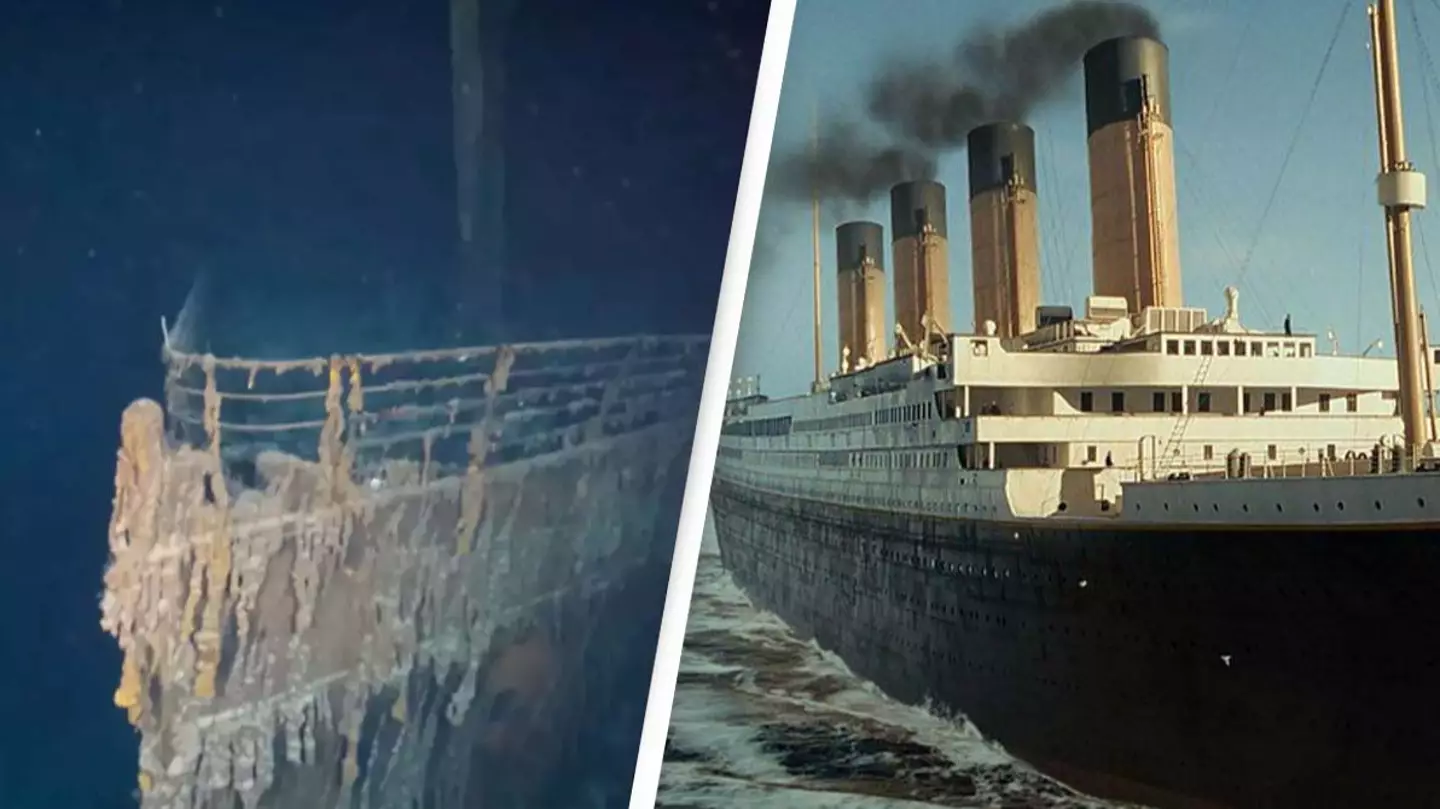
Expert reveals why over 1,000 bodies were never recovered from the Titanic wreckage
What happened to the bodies of over 1,000 passengers on the titanic when it sunk is a science 'we don't know much about'.
Poppy Bilderbeck
An expert has revealed what they think happened to over a thousand bodies that were never brought back to land after the Titanic sank.
We've all seen the 1997 hit movie with Leo and Kate focusing on the lives - and one particular love story - of those onboard the great RMS ocean liner just before it sunk.
However, only a glimmer of the movie shows the wreckage of the Titanic , where a reported 1,160 missing passengers likely ended up.
Around 300 bodies were able to be recovered from the wreckage after the RMS Titanic sunk in April, 1912.
However, this was only around just over 20 percent of the amount of people who were actually on board the ship, as per Titanic Facts.
So, what happened to the estimated 1,160 bodies who sunk with the ship ? Why were they not recovered and what's happened to them over 100 years later.
Maritime archaeologist, historian and senior vice president of archaeology firm SEARCH Inc., James Delgado has since weighed in on the matter.

In an interview with the Mail Online last year, Delgado voiced scientists believe there 'could be a possibility' that 'some semblance of human remains' left inside the ship.
"But this is a science we don't know much about, particularly in the deep ocean," he added.
Pictures taken of the wreckage have provided 'very compelling' evidence to suggest where the bodies came to rest by showing where 'pairs of shoes' had 'splayed,' however, ultimately no bodies have ever been spotted.
Delgado previously spoke out about the wreckage in 2012 after the National Oceanic and Atmospheric Administration - of which he was director of maritime heritage - released an image from the wreckage of a boot lying on the seabed.
He told the New York Times: "There are people inside. The articulation of the coat and boots are highly suggestive of someone coming to rest here."
His theories echo with Titanic director James Cameron's reporting of what he's seen among the wreckage.
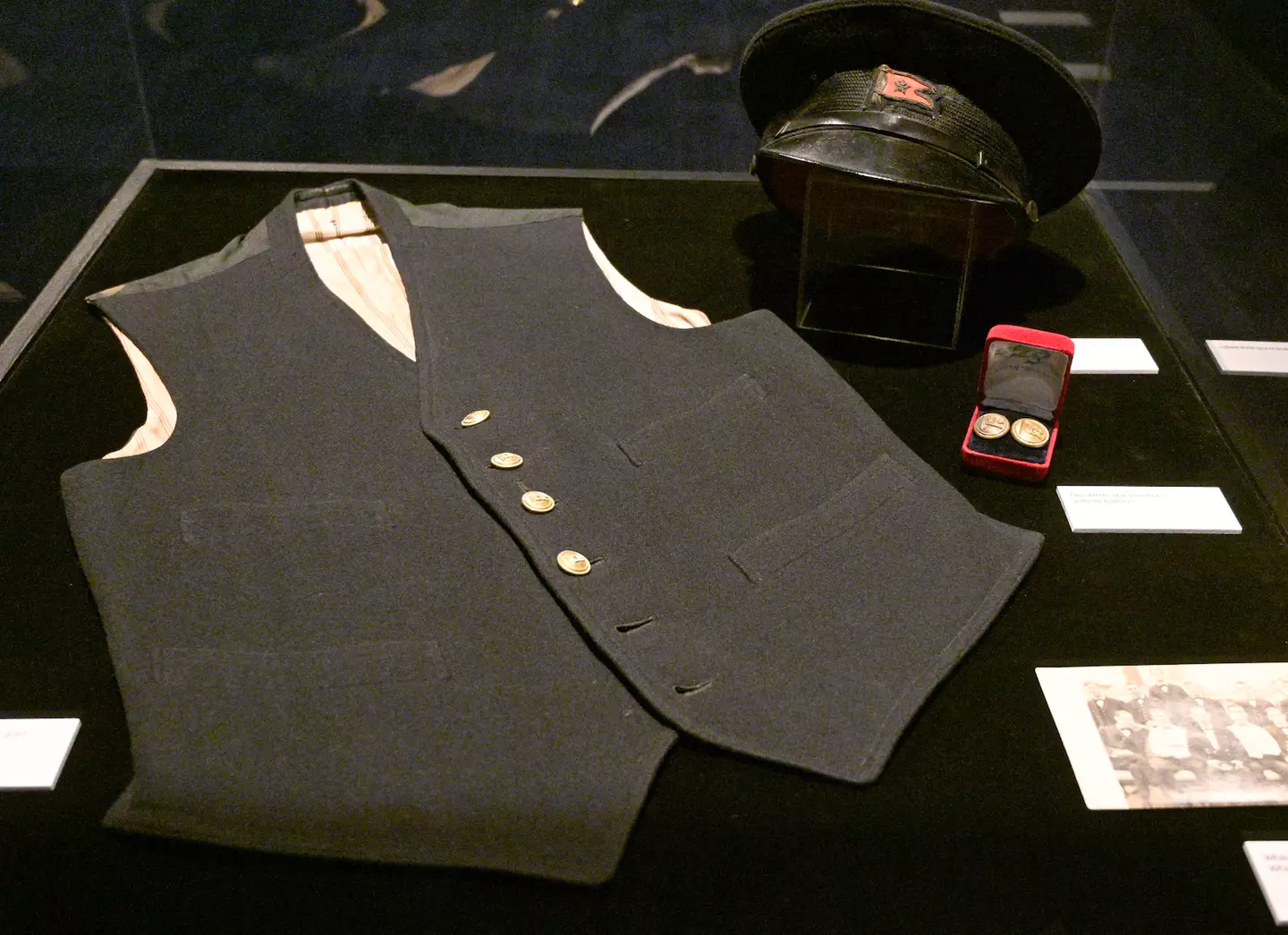
Cameron has previously said he's 'seen clothing' and 'shoes' which 'would strongly suggest there was a body there at one point'.
However, the director similarly echoes he's 'seen zero human remains' so it's a fact which cannot be confirmed.
If the bodies did come to rest within the boat, it's not a surprise no one's been able to spot them when surveying the wreckage, many likely having decomposed before the wreck was even found in 1985.
However, Titanic expert Robert D. Ballard previously told the New York Times he 'would not be surprised if highly preserved bodies' did remain in a specific place among the wreckage - the engine room 'deep inside the ship'.
Topics: Science , Titanic , World News
Poppy Bilderbeck is a Senior Journalist at LADbible Group. She graduated from The University of Manchester in 2021 with a First in English Literature and Drama, where alongside her studies she was Editor-in-Chief of The Tab Manchester. Poppy is most comfortable when chatting about all things mental health, is proving a drama degree is far from useless by watching and reviewing as many TV shows and films as possible and is such a crisp fanatic the office has been forced to release them in batches.
Choose your content:

Woman buys another person's luggage from airport for $100 and reveals 'strange' discovery inside
The woman was 'not sure what to think' about the contents of the suitcase abandoned at london heathrow airport.

People are just finding out the 'gross' way blue cheese is made and they never want to eat it again
Many social media users have been left disgusted by the discovery.

Man shows off iPhone 'tricks' leaving people convinced they don't know how to use their phones
Did you know about any of these handy iphone hacks.

Saudi Arabia breaks silence on claims $1 trillion giga project The Line is massively decreasing in size
The saudi arabian minister for economy addressed reports neom's the line had been massively scaled back.
- People are only just realizing the real reason why there are no skeletons in the Titanic wreckage
- 'Presumed human remains' have been discovered inside recently recovered Titan debris
- Youngest ever Titanic explorer would never have gone on OceanGate's Titan sub
- This is what experts say the infamous banging sound from Titanic sub disaster likely came from
Gold pocket watch of richest Titanic passenger sells for record price
A US buyer wins the bidding war, exceeding – by more than 10 times – the auctioneer’s presale estimate.

A gold watch found on the body of the richest passenger on the Titanic has been auctioned in the United Kingdom for 1.17 million British pounds ($1.46m) – a record sum paid for an object linked to the infamous 1912 shipping disaster.
The watch, engraved with the initials JJA after the United States-based business magnate John Jacob Astor, was sold on Saturday by the auctioneers Henry Aldridge & Son.
Keep reading
Titanic shipyard to stay afloat, ‘a challenge’: crews search for missing titanic tourist sub, titanic sub implosion: was the deep ocean vehicle safe, photos: mystery shipwreck causes disastrous oil spill off trinidad.
A US buyer won the bidding war, exceeding – by more than 10 times – the auctioneers’ presale estimate of between 100,000-150,000 pounds ($126,000-189,500).
A used first class menu from the first night on the Titanic sold yesterday at British auction house Henry Aldridge & Son for $100,000. A pocket watch found on second class passenger Sinai Kantor sold for $122,000. pic.twitter.com/ynF0UIt7I9 — Darren Rovell (@darrenrovell) November 12, 2023
Astor was 47 when he died as the Titanic sank in the early hours of April 15, 1912, one of 1,500 people on board who died. He was reputed to be one of the richest men in the world at the time.
He died after having helped his wife, Madeleine, board one of the lifeboats. She survived the disaster.
Astor’s body was found a week after the disaster, with the watch among his personal belongings. A statement from the auction house said the watch was completely restored after being returned to Astor’s family and worn by his son.
In November 2023, a pocket watch recovered from the body of passenger Sinai Kantor, 34, a Russian immigrant who died in the catastrophe, was also sold by the same auction house in the UK for 97,000 pounds ($118,700).
A rare menu from the ill-fated liner’s first-class restaurant that showed what the most well-to-do passengers ate for dinner on April 11, 1912 – three days before the ship struck the iceberg that caused it to sink in the Atlantic Ocean – sold for 83,000 pounds ($101,600).

IMAGES
COMMENTS
The tail cone and other debris from the missing submersible were found by a remotely operated vehicle about 1,600 feet from the bow of the Titanic, which rests about 13,000 feet deep in the North ...
The debris was found off the bow of the sunken Titanic, officials said. The search for the Titan, which went missing Sunday after it e mbark ed on a mission to survey the wreckage of the Titanic ...
The search area is 900 miles off the U.S. coast. A submersible craft carrying five people in the area of the Titanic wreck in the North Atlantic has been missing since Sunday, setting off a search ...
The accelerating search efforts came as an updated prediction by the Coast Guard said the Titan submersible was likely to run out of oxygen roughly around 7 a.m. EDT Thursday. It initially had 96 ...
A submersible capable of taking tourists over 2 miles underwater to view the Titanic wreckage up close has gone missing. ... The company's deep sea tour lasts about eight days and costs $250,000 ...
Debris from the vessel, which vanished while descending to view the wreck of the R.M.S. Titanic, was found on the ocean floor on Thursday morning, about 1,600 feet from the bow of the shipwreck ...
The vessel was operated by OceanGate Expeditions, which has provided tours of the Titanic wreck since 2021. Spots in the tours go for a price of up to $250,000 as part of a booming high-risk ...
The Titan submersible that went missing en route to the Titanic wreck was designed to return to the surface after 24 hours, according to Aaron Newman, an investor in OceanGate who visited the site ...
Tour firm OceanGate said all options were being explored to rescue the five people onboard. Tickets cost $250,000 (£195,000) for an eight-day trip including dives to the wreck at a depth of 3 ...
June 19, 2023 6:05 PM PT. An intensifying search-and-rescue mission was underway Monday after a submersible watercraft used for tourist expeditions to view the wreck of the Titanic went missing ...
Missing Titanic submersible. The latest: After an extensive search, the Coast Guard found debris fields that have been indentified as the Titan submersible. OceanGate, the tour company, has said ...
Live updates on the search for the missing Titanic tourist submersible. ABC News. ... a submersible carrying five people that vanished while on a tour of the Titanic wreckage off the coast of ...
The missing submersible — named Titan, according to The Associated Press — is part of a tour offered by private company OceanGate Expeditions exploring the Titanic wreckage, 900 nautical miles ...
5 of 18 | . This photo provided by OceanGate Expeditions shows a submersible vessel named Titan used to visit the wreckage site of the Titanic. In a race against the clock on the high seas, an expanding international armada of ships and airplanes searched Tuesday, June 20, 2023, for the submersible that vanished in the North Atlantic while taking five people down to the wreck of the Titanic.
On April 14, 1912, the Titanic collided with an iceberg in the North Atlantic on its maiden voyage from Southampton, England, to New York City. On April 15, at about 2:20 a.m., the ship sank. More ...
A five-person crew on a submersible named Titan, owned by OceanGate Expeditions, submerged on a dive to the Titanic wreckage site Sunday morning, and the crew of the Polar Prince research ship ...
As search teams race against time to find the small sub that went missing during a dive to the wreck of the Titanic, writer Mike Reiss told #BBCBreakfast about taking the same trip last yearhttps ...
On 18 June 2023, Titan, a submersible operated by the American tourism and expeditions company OceanGate, imploded during an expedition to view the wreck of the Titanic in the North Atlantic Ocean off the coast of Newfoundland, Canada.Aboard the submersible were: Stockton Rush, the American chief executive officer of OceanGate; Paul-Henri Nargeolet, a French deep-sea explorer and Titanic ...
FILE - This undated image provided by OceanGate Expeditions in June 2021 shows the company's Titan submersible. OceanGate, the company that owned the submersible that fatally imploded on its way to explore the wreck of the Titanic said Thursday, July 6, 2023 it has suspended operations.
For the past three years, he has charged up to $250,000 per person for a chance to visit the wreckage of the Titanic, which sank in 1912 on its inaugural trip from England to New York.
An expert has revealed what they think happened to over a thousand bodies that were never brought back to land after the Titanic sank. We've all seen the 1997 hit movie with Leo and Kate focusing on the lives - and one particular love story - of those onboard the great RMS ocean liner just before it sunk.. However, only a glimmer of the movie shows the wreckage of the Titanic, where a reported ...
A gold watch found on the body of the richest passenger on the Titanic has been auctioned in the United Kingdom for 1.17 million British pounds ($1.46m) - a record sum paid for an object linked ...